Tembo, a global leader in 4×4 EV conversions, has launched the Tembo Tusker, a 100-per-cent electrified ute priced from $74,000 (+GST and ORC) in Australia.
The Tusker range will be available in single (Tusker-S) and dual-cab (Tusker-D) body configurations, with both 65Kwh and 77Kwh variants providing ranges of 330km to 400km (on a single charge) respectively. Tembo says the vehicles will have a payload capacity of 1000kg and an unbraked towing capacity of 750kg.
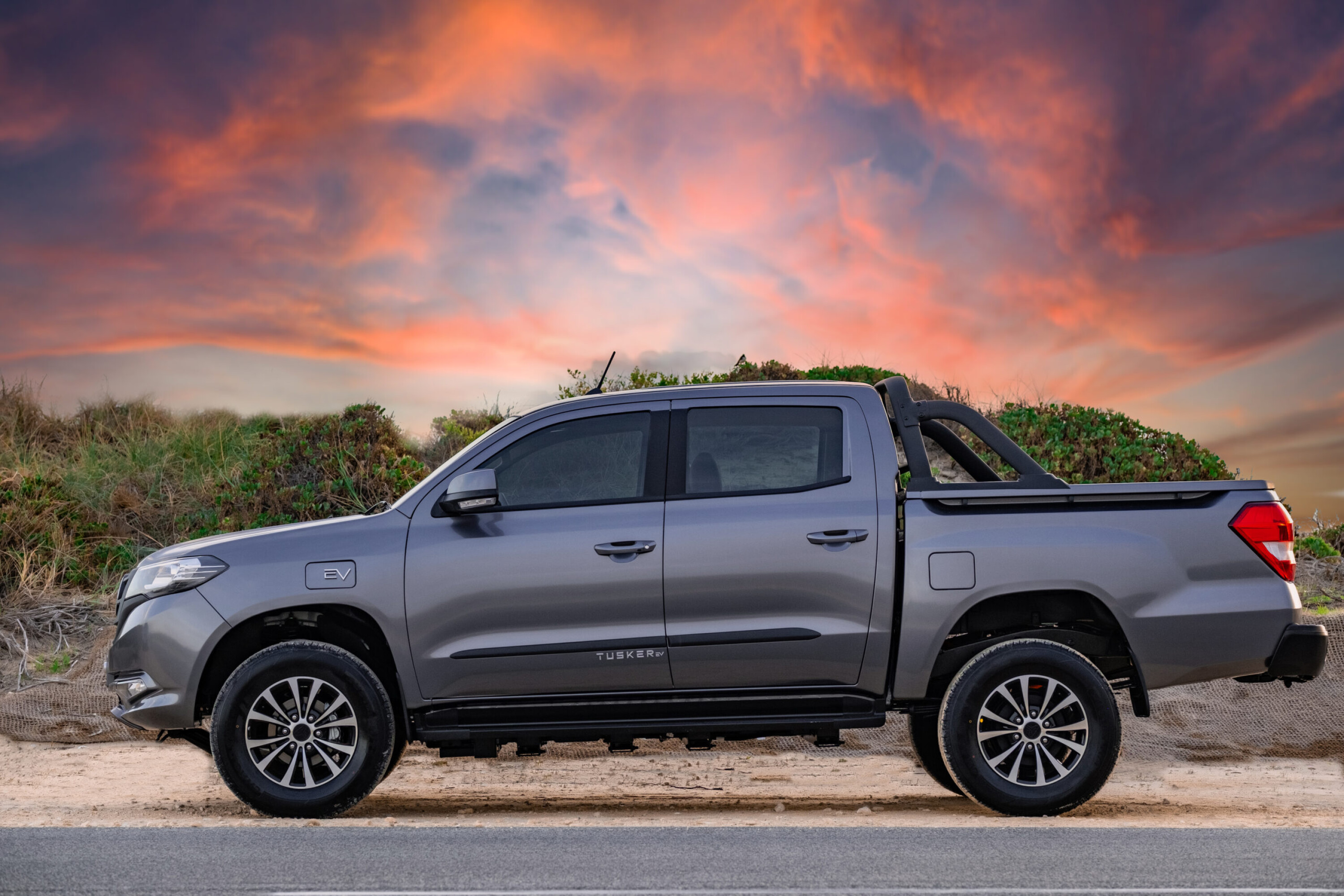
“The Tembo Tusker represents the best value electric ute in Australia, with a starting price from $74,000,” said Chris Mallios, Chief Commercial Officer of VivoPower, the parent company of Tembo.
“We’ve achieved this through our years of experience building electric 4×4 vehicles for demanding users, and our capital light production strategy that partners with global best-of-breed manufacturers and suppliers.
“We are confident that the Tusker’s performance and affordability will lead the charge in electrifying the $16 billion per annum Australian ute market,” Mallios added.
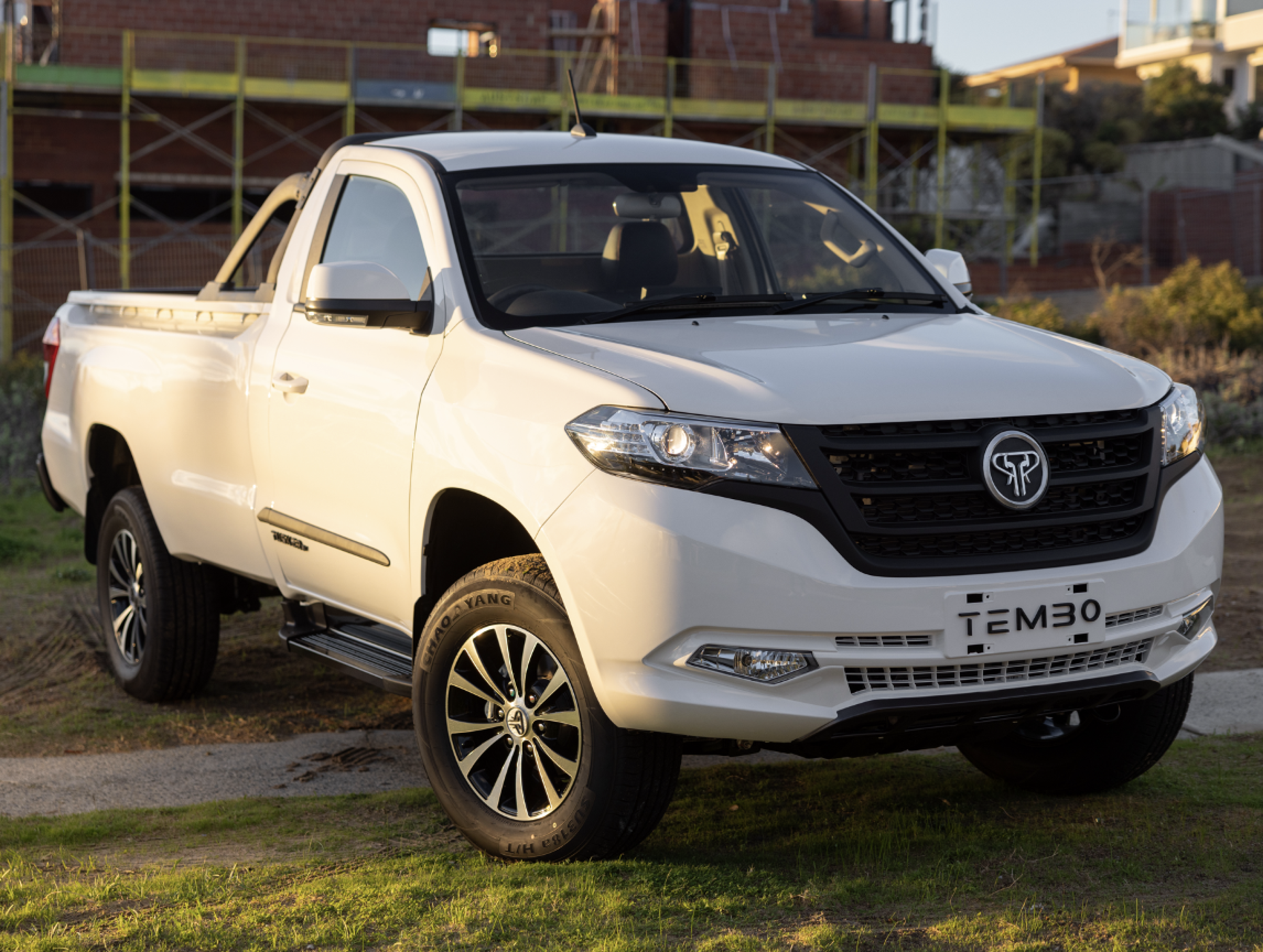
If the name Tembo sounds vaguely familiar, then you’ve probably heard about the Tembo e-LV, specialised EV conversion kits that transform internal combustion engines into fully electrified units. First trialled in Australia in 2018, these EV conversion kits can be retro-fitted to second-hand vehicles, with Tembo emphasising a strong focus on mining vehicles – in particular Toyota’s LandCruiser and HiLux.
The kit designed for the LandCruiser, for example, has 72kWh battery capacity with an expected range of 180 to 190km and maximum outputs of 110kW and 220Nm. The converted vehicles also feature a modernised touch screen display; an improved cooling fan and thermal management circuit; regenerative braking; one pedal driving; and an onboard input so that the e-LV can be charged by AC outlets (from 20 to 80 per cent charge in two hours).
The Tembo Tusker EV will be sold alongside the e-LV conversion kits.
We’ve approached Tembo regarding information about when we can expect to see the Tusker on sale in Australia, so stay tuned for further news.
When it comes to power management systems for canopies, the Klarmann Prospector is one of the neatest we’ve seen.
The wiring is impeccable, and the system’s fuse panel dubbed the EGON DC Hub helps keep the wiring simple and provides power to all accessories. A universal solution for full-width canopies, the Klarmann Prospector is designed in-house at Perth Pro & Klarmann Automotive Solutions. The robust design includes multiple mounting options and comprehensive cable management.
The unit features a 2000VA Victron MultiPlus pure sine inverter that prioritises shore power over 12V power – if the circuit draws 20 amps and you can get 15 amps from shore power, it will only draw five amps from the auxiliary battery. It also has an AC switch so your 10-amp power points will automatically switch from the 2000W inverter to shore power when connected to shore power.
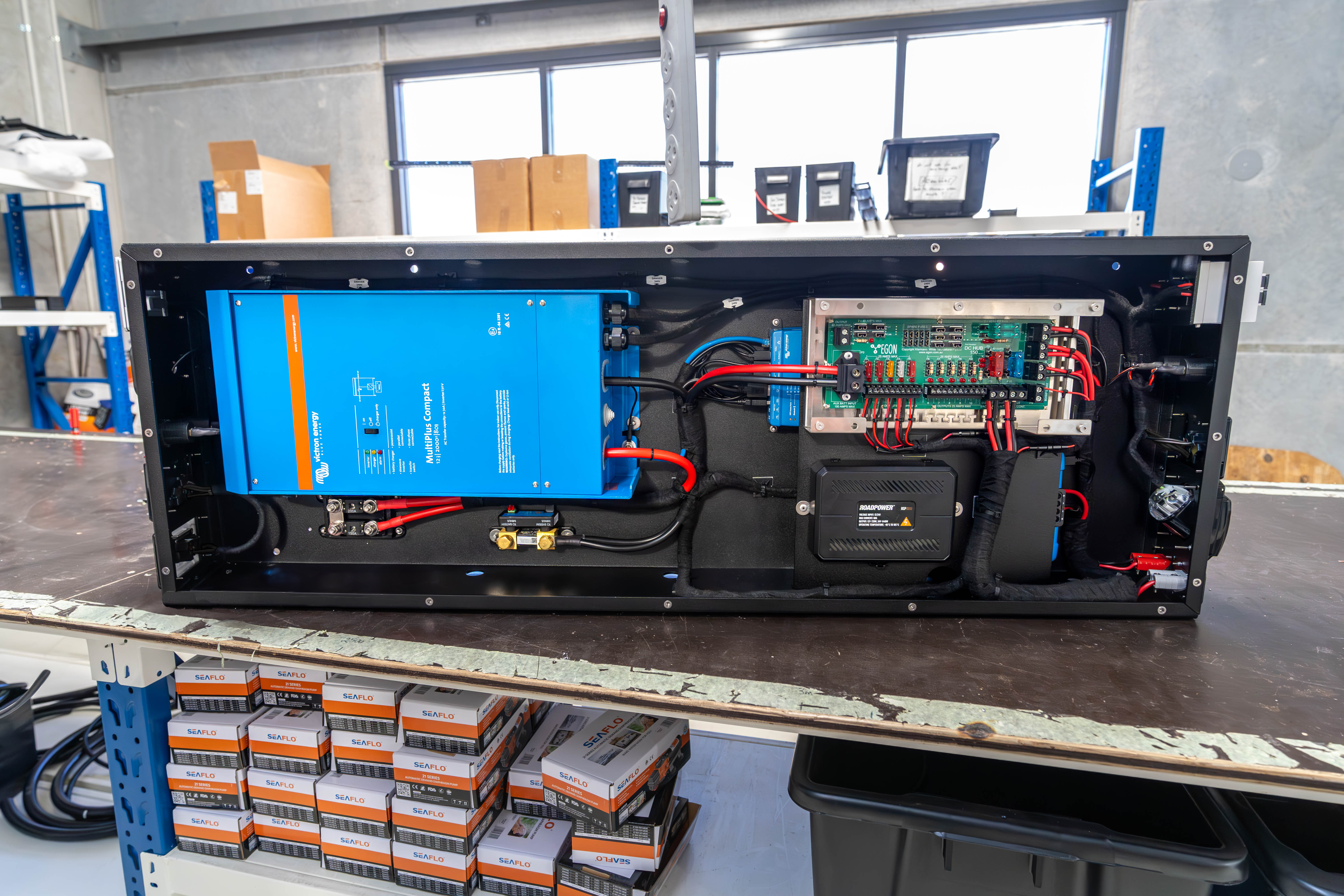
The EGON DC Hub is a robust DC input/output fuse box combination board that reduces installation costs and time. All components are wired to this central hub, including AC chargers, solar panels and DC chargers. From the same unit, cabling is run to all accessories such as fridges, lights and compressors. This can all be done without needing crimps, lugs, heat shrinks or expertise.
With the 50A Victron Orion DC-DC charger, you can precisely set the input and output current with simple controls, which helps protect the auxiliary battery against overloading and charge the auxiliary battery correctly, especially with intelligent alternators. The Orion XS includes customisable charging algorithms and eight battery preset modes, and it’s suitable for all battery types.
The Victron 100/150A MPPT solar regulator constantly monitors the voltage and current output of your solar panels, ensuring every drop of available power is taken from your panels and harvested for storage. The advantage of this is most noticeable when the sky is partially clouded and light intensity is constantly changing. You can also remotely control and monitor the extensive features of the MPPT via the built-in Bluetooth, by pairing it with your smartphone or other devices via VictronConnect.
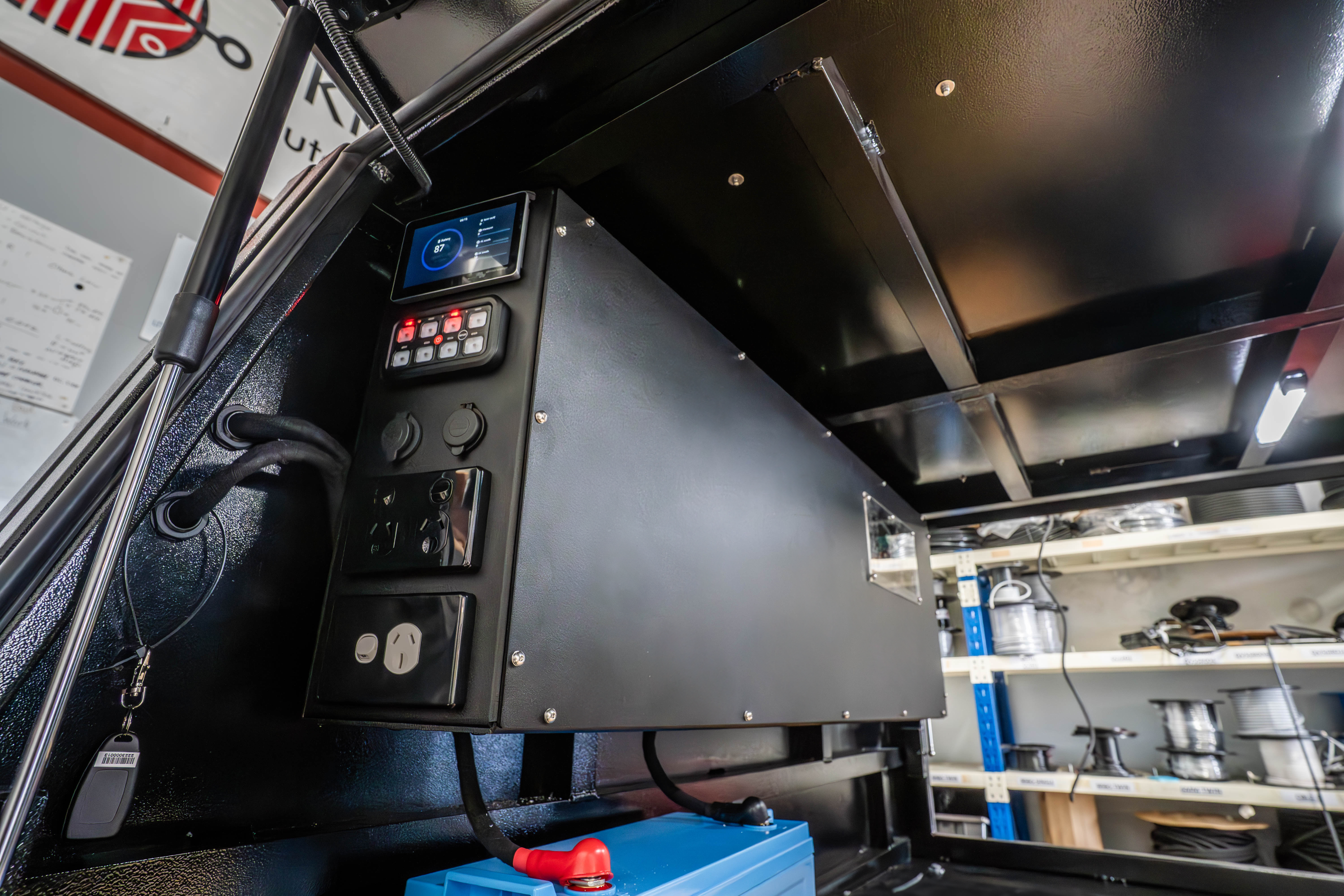
This Victron Cerbo GX communication centre allows you to always have control over your system. Connect through the GX Touch 50, a five-inch touchscreen that gives an instant overview of your system and allows you to adjust settings easily.
Comprehensive electrical connections include RCDs for 240V input and outputs; dual USB ports; 12V sockets; 240V dual 10A and 15A outputs; Anderson plug outputs; and solar input. The Roadpower in-car auxiliary switch panel provides a user-friendly interface to control up to eight switchable components including auxiliary lighting, winch systems and battery setups. With soft backlit buttons that support on/off, momentary or pulsating functions, the Roadpower is versatile and customisable with 70 switch decals to suit most applications.
“Empowering vehicle canopies with our groundbreaking power management system is setting new standards for performance and efficiency in driving innovation,” said Justin Lansdown, Klarmann Automotive Solutions. “With its innovative design allowing the off-grid system to be installed with its plug-and-play design at a fraction of the price and available to be shipped worldwide, it elevated expectations for all power management systems.”
The Klarmann Prospector measures 1366mm long, 440mm high and 166mm wide.
Pricing: $7962 (RRP)
Toyota has slammed shut its order books for V8-powered 70 Series models, effectively ending the run of its 1VD-FTV 4.5-litre turbo-diesel V8 in Australia.
Orders have been paused for almost two years for the V8-powered 70 Series, and Toyota has today declared they will not be reopened. The Japanese marque instead will aim to deliver existing orders.
The final production of the V8 Wagon, TroopCarrier, and WorkMate and GX pick-ups is set to take place in September this year. These customers can expect to receive their vehicles late in 2024 or early in 2025. However, Toyota says production will continue to the end of 2025 to meet the high demand of 79 Series GXL single- and double-cab utes.
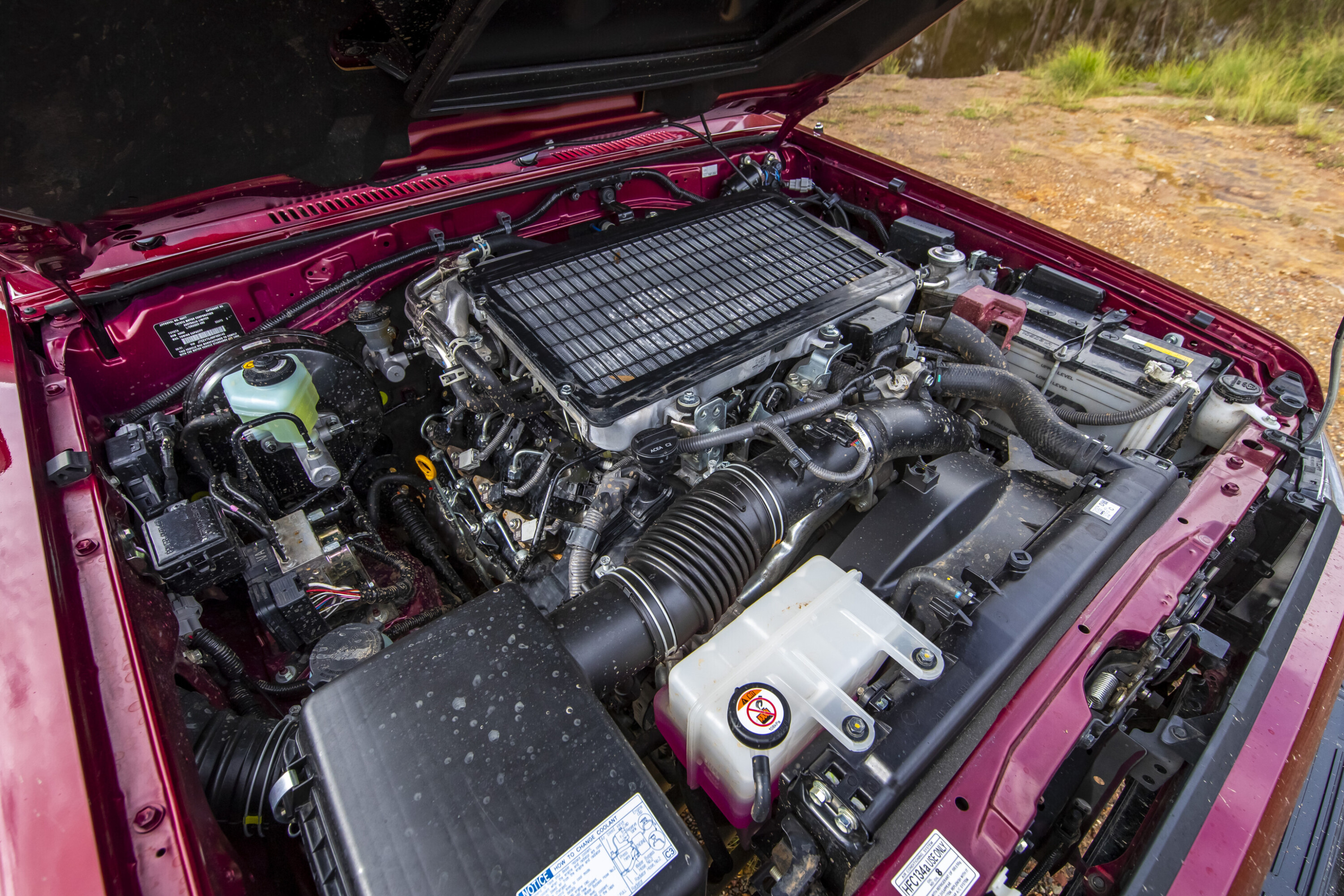
Toyota Australia’s Vice President of Sales, Marketing and Franchise Operations, Sean Hanley, said the decision to boot the V8 was inevitable due to changing regulations and community expectations.
“Bidding farewell to the V8 marks the end of one chapter and the start of another for the go-anywhere 70 Series,” Hanley said. “We continue to work closely with our production team to receive the maximum possible V8 allocation so that we can fulfil as many local customer V8 orders as possible.”
With the V8 now off the table, buyers are left with the option of Toyota’s 1GD four-cylinder turbo-diesel powertrain. The four’s 150kW and peak torque of 450Nm is in fact punchier than the V8’s 151kW and 430Nm. Plus, most four-cylinder variants can now be mated to an all-new five-speed manual gearbox that has been derived from the V8 manual and adapted for the 2.8L four.
This new manual transmission – dubbed H153F – has been calibrated with unique gear ratios to suit the engine’s high torque output. This includes shorter first, second and third ratios, and a longer fifth gear. A flywheel compatible with a 12-inch clutch has also been newly adopted.
Introduced in 2007, the V8 has been largely popular with buyers, accounting for almost half of all 70 Series – even more impressive when you consider the 70 Series was first introduced in 1985.
Customer orders for four-cylinder variants are not affected by the V8 decision.
You have to hand it to the BT-50.
It’s a bit of an unsung hero on the 4×4 scene, handling everything the more popular (and more expensive) dual-cabs can while somehow not drawing a heap of attention to itself.
A bit like the bloke in the back of the pub who could go toe-to-toe with a prime Mike Tyson but will never instigate anything or brag about his ability; a quiet achiever, just gets on with the job, does it superbly, then goes quietly back to his beer without fanfare.
That’s what Royce and Gabby’s Mazda does day in and day out. At first glance it may look like just another well-sorted tradie’s ute, but once you start peeling back a few layers you begin to realise that this thing has been built to handle the long trips to the remotest parts of the continent for weeks at a time; the vehicle version of that quiet bloke in the pub.
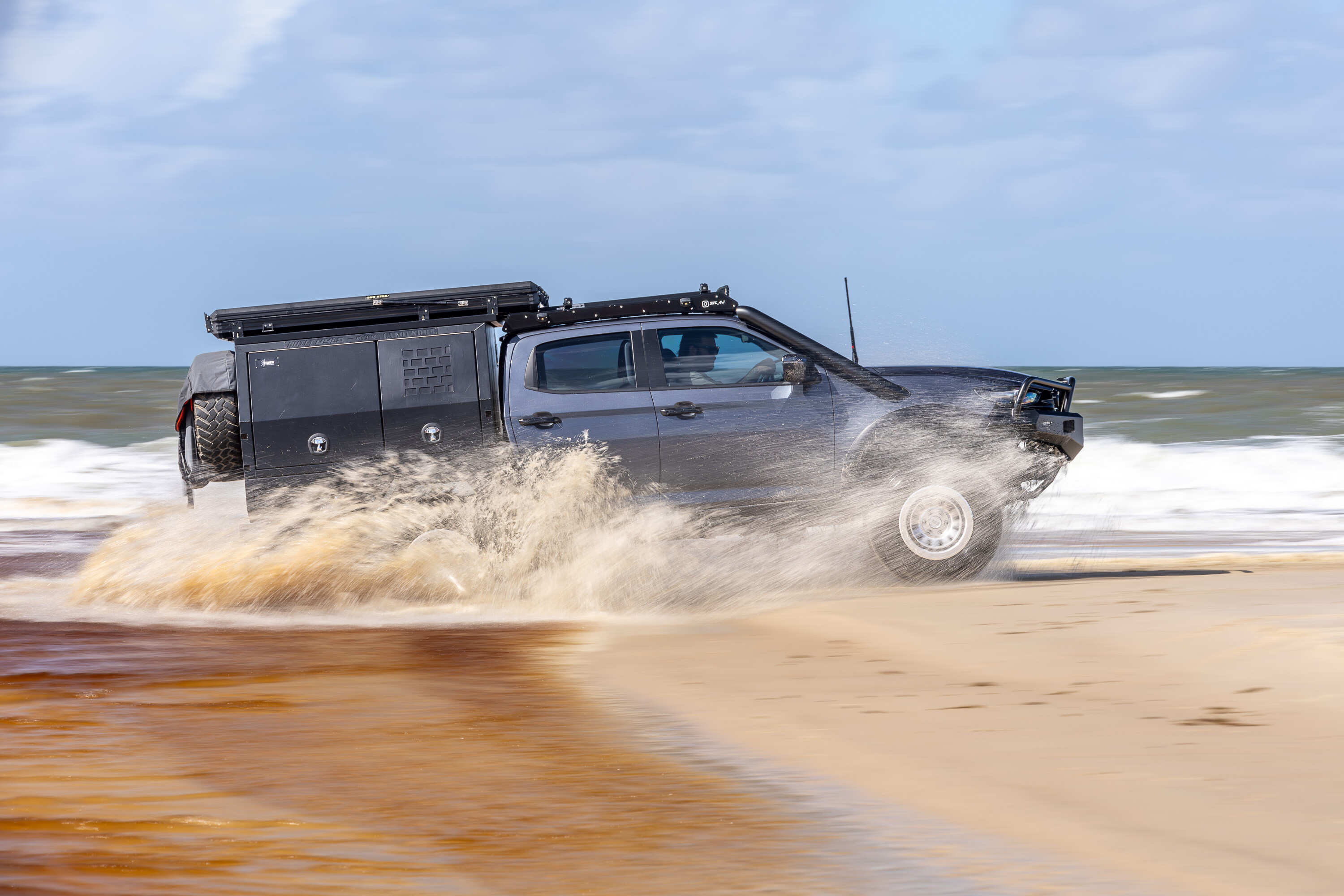
Unassuming and not in your face at all, but once the going gets tough, it’s the fourby you want in your corner.
Royce and Gabby are no strangers to the Mazda workhorse, having previously owned a 2012 BT that was well and truly worked. Putting out around 220 horses with all the fruit, the last one was a beast, and opened a lot of people’s eyes to what BT-50s are capable of out on the tracks.
Now, this one has been taken to an even higher level over the last couple of years, and with a few massive trips on the horizon, we thought we’d better hop in and take a look before it heads off into the bush for the foreseeable future.
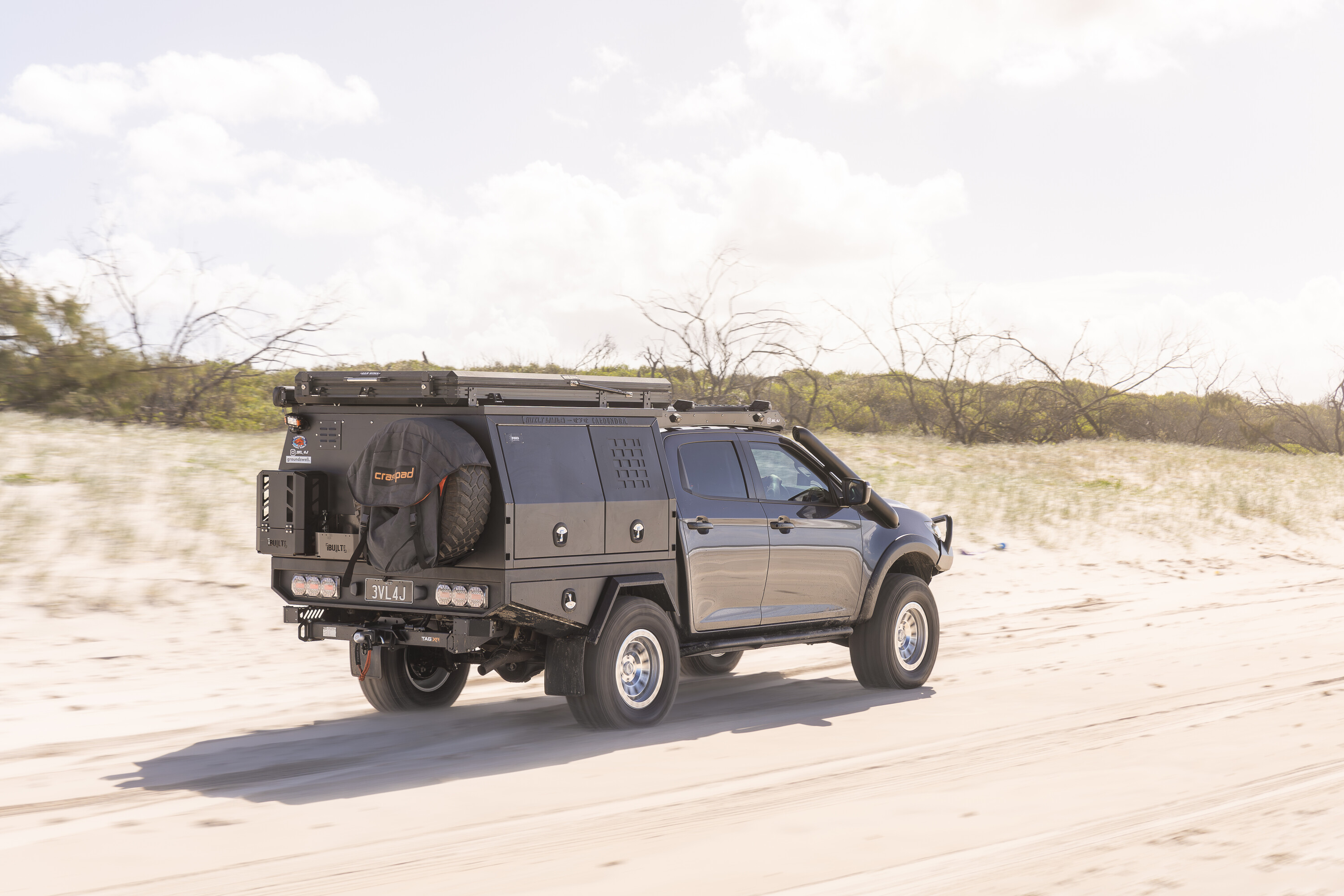
The bolt-on bits
Starting up front, the BT copped a PSR Ambush front bar with LED fog lights and bash plates to keep the engine and steering gear away from rock damage.
Keeping the LED lighting theme going are no fewer than 10 Stedi Cube lights mounted to the leading edge of the rack. In fact, Stedi LEDs are dotted all over the joint, providing camp lighting out the back and sides for when Royce and Gabby pull up after dark.
When they do, the San Hima rooftop tent is about as easy to set-up as it gets, while a Darche pull-out awning keeps the weather off the dome. There’s also a custom alloy table that attaches to the side of the canopy and is cleverly stored away on its own rack.
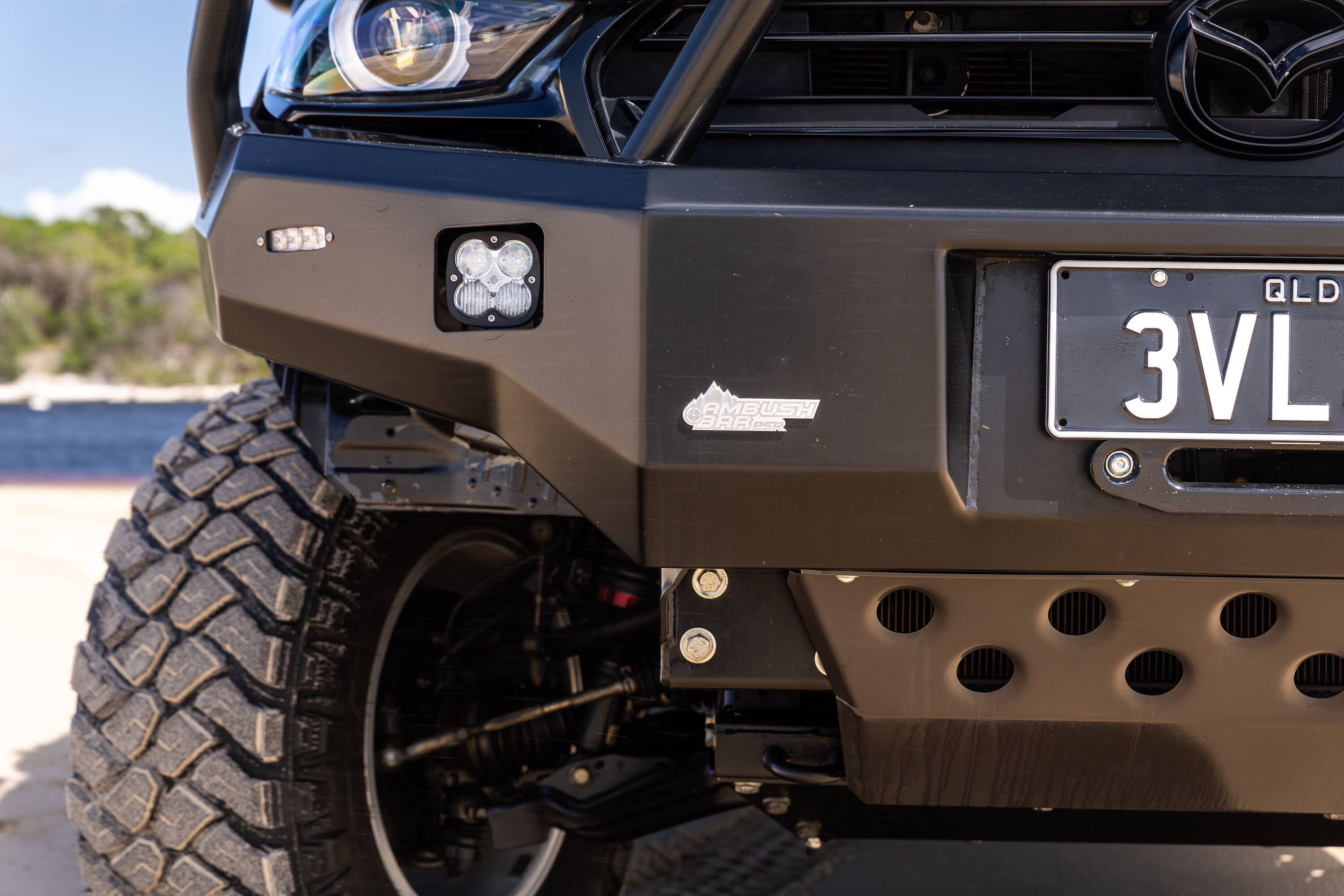
It was modelled off a timber one Royce’s dad built way back for fish cleaning after a successful bait-soaking session in the beach gutters. That table held up for 15-plus years and is still going strong, so hopefully this one will follow its lead.
Doyle’s Offroad Customs sliders have been employed to keep the sills from being creased while a TAG XR rear bar protects the bum and allows a trailer to be lugged along in the rear view. Up in the cab the seats and floors are covered with Supatrim and Maxliner respectively, while a Scangauge III watches over the engine vitals.
Interestingly, and increasingly common these days, is that the GME UHF has been mounted underneath the centre console; the only giveaway is the RJ45 pass-through plug for the handpiece. It’s a neat way to get comms without having a bulky radio taking up precious real estate.
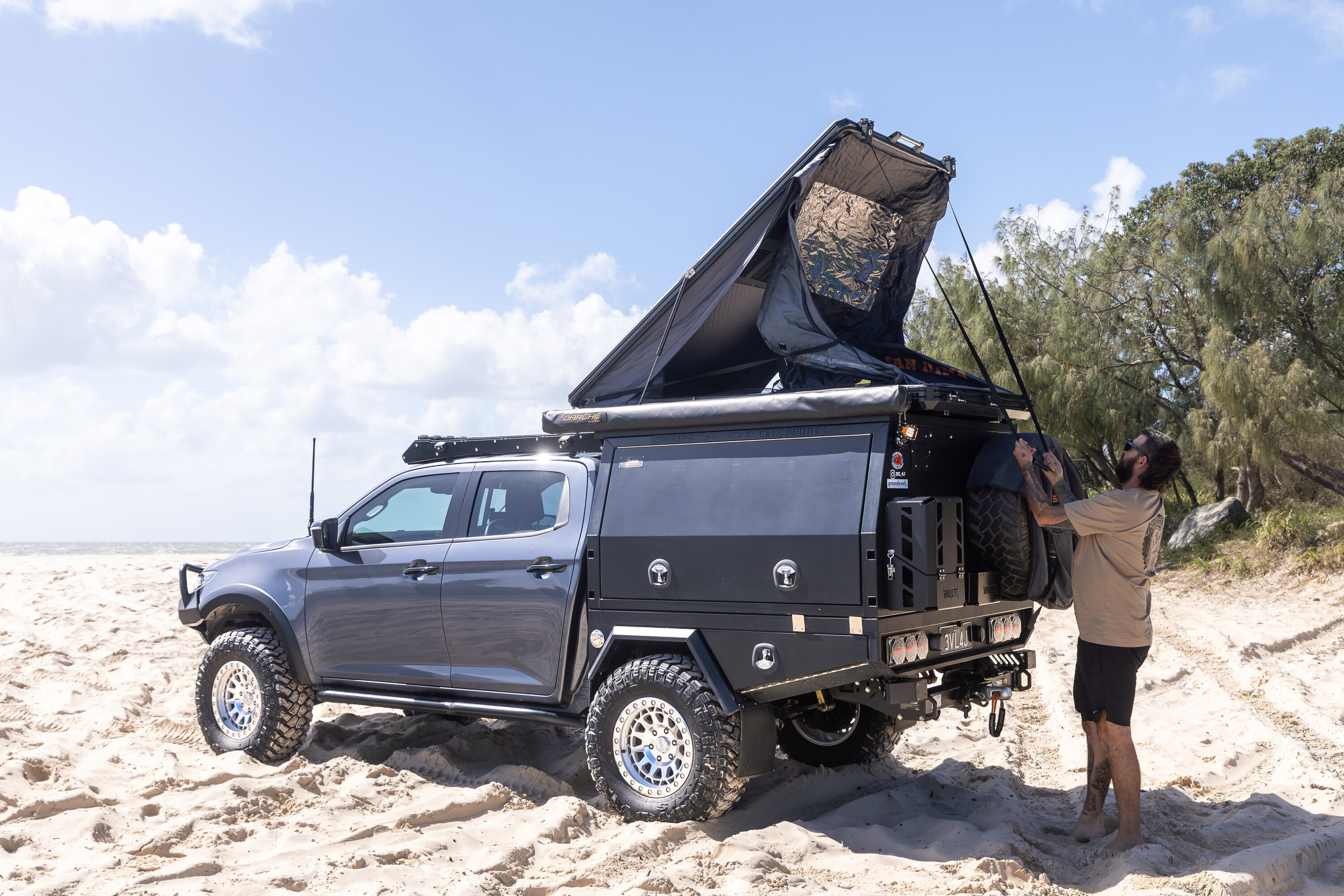
Ride height and rubber
Gone are the days of a quick coil-n-shock swap and you pretty much can bolt up any size tyres you fancy. Like most newer dual-cabs, fitting up 33-inch rubber (or 295/70R17 to be precise) is not that straightforward, but neither is it impossible, as Royce has shown.
First item on the list was to junk the original front coilovers and throw in a set of PSR TTG coilovers that sent things four inches skywards. Of course, when it comes to IFS you can’t just lift them by that much without also installing a diff drop to keep the halfshaft angles in check, so Royce added a Munji bracket set to the list as well.
Down the back, the shocks were exchanged for matching PSR units while the stock leaf packs were swapped out for a set of 2-inch raised 300kg static-load items. Why not a 4-inch lift like the front? Most stock utes come with a ‘stink bug’ stance where the rear is higher than the front – so when there’s a load in the back it levels itself out.
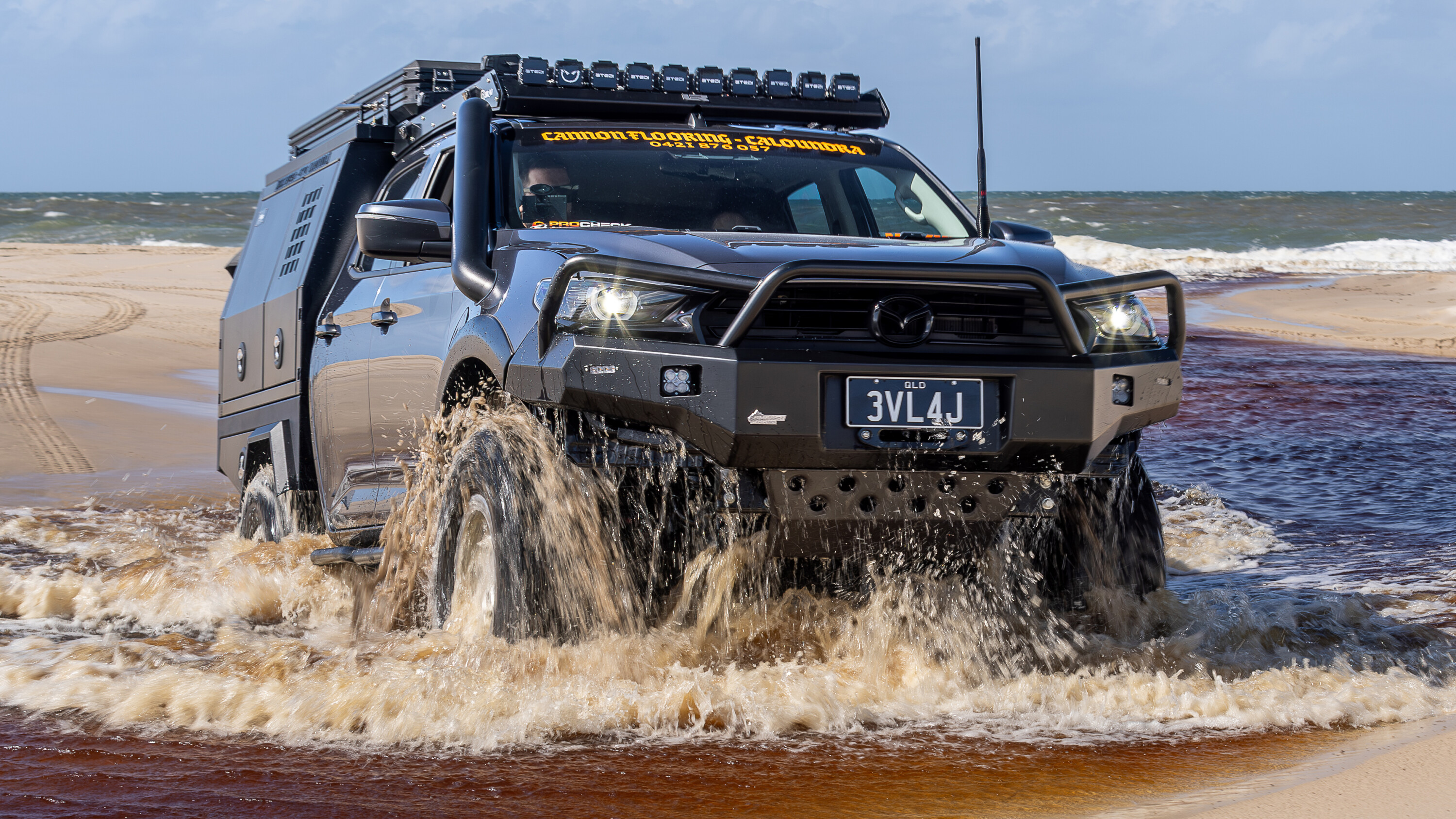
Given Royce and Gabby already knew what weights they’d be carrying they set the springs up accordingly and can always maintain a steady ride height. This is where experience and knowing exactly what you want from your 4×4 pays off.
The 17-inch Black Rhino Primm alloys add a bit more sex appeal to the Mazda’s looks, and Royce had a set of 295/70R17 Maxxis RAZR donuts fitted up as a neat middle-ground between blacktop tourability and off-road grip.
Royce has plans to add an extra inch of body lift before long, and to give the body mounts a bit of a haircut with the grinder too, all in aid of increasing clearance for the Maxxis rubber. And no, of course he’s not going to just run smaller tyres…
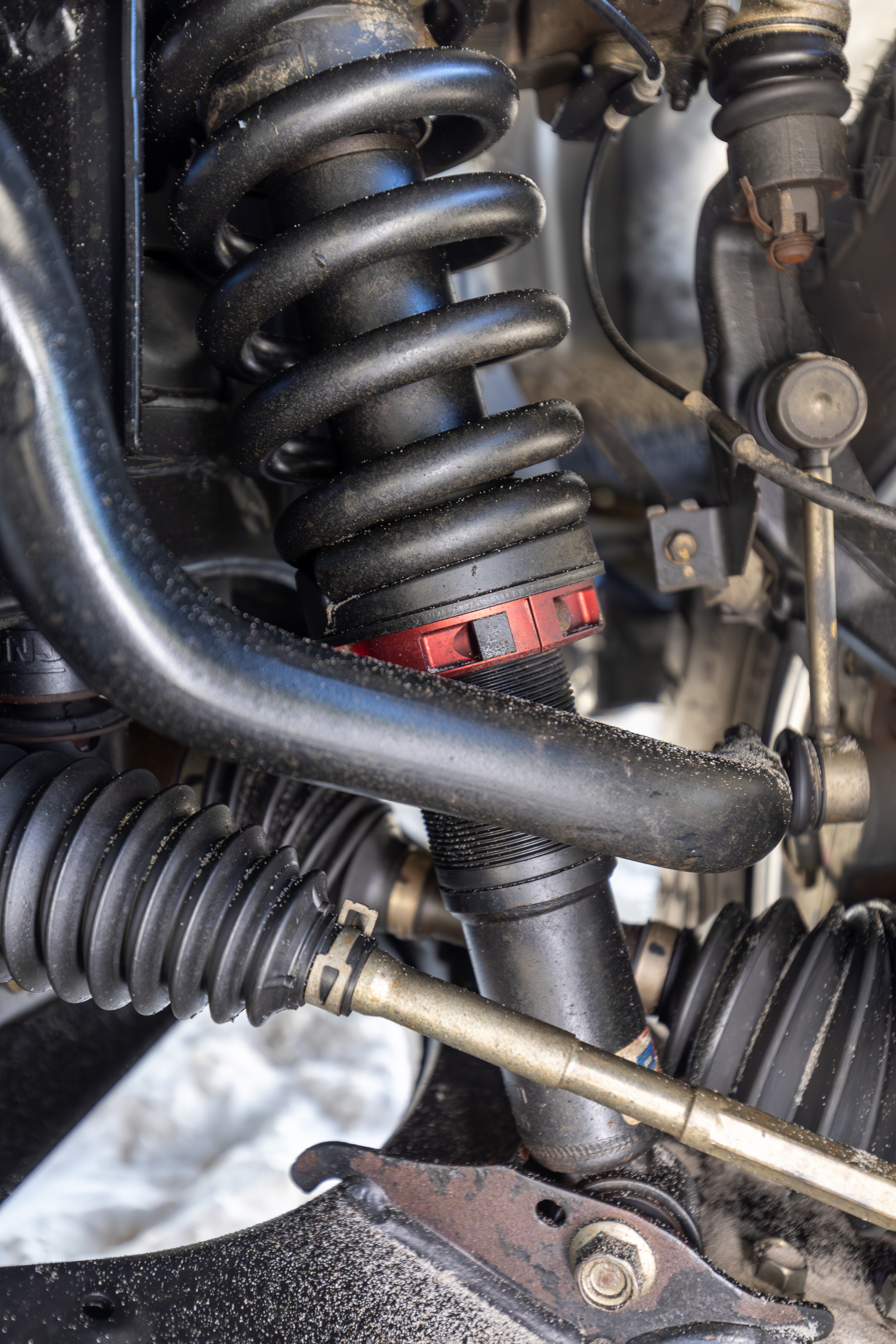
Big box out back
You’d think that the canopy is the easy part of a build, right? Nah. To be fair, this one worked fine, but Royce isn’t the type of fella who likes to call 95 per cent done as good enough.
In fact, if he was starting over he’d probably do things a bit differently, but you get that on most builds. He also wanted to stress that the canopy itself, built by Fused Fabrications, is a great unit, but a few small tweaks were needed to get things how he wanted them.
There was nothing to mount the tent to on the roof, so track rails were fitted up. Then the floor was custom made so that it sat flush with the doors, making access to the 85L upright fridge a lot easier. Then the tray that the canopy is mounted on is steel, which Royce reckons would have been if it was aluminium to start with… and several other little things of that nature.
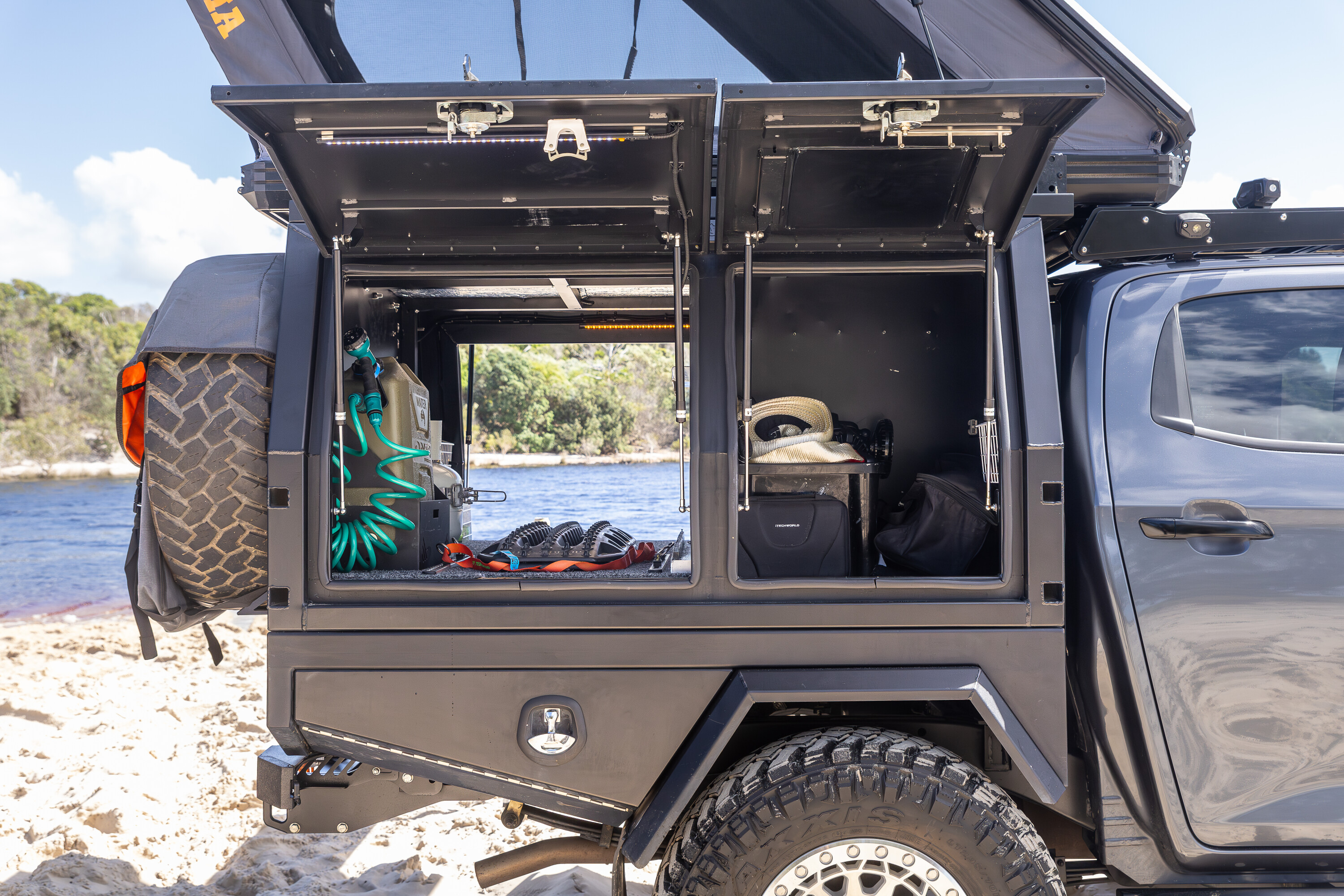
Now that it’s all been sorted, both he and Gabby reckon the whole show works well.
All of the gullwings have LED strips for after dark beer/gear retrieval and the recovery boards, Maxtrax Indeflate and permanently mounted compressor are all within easy reach. There’s even a 12V oven for those all-important mid-trip pie stops.
Water is stored in the Ontap jerry that comes with an inbuilt 12V pump, while spare fuel is kept in the iBuilt mounts on the rear bulkhead. There’s also a 9kg gas bottle holder for the Weber that Royce and Gabby never leave home without.
Keeping the electrons flowing is a 100Ah lithium, wired up with a 25A charger and solar feed. This hooks up to a 200W panel that’s fitted with a quick release, so there’s the capability for solar to be set-up anywhere within a 10m radius of the vehicle. Just the ticket when you’re parked under some shade and want to keep the fridge running cool.
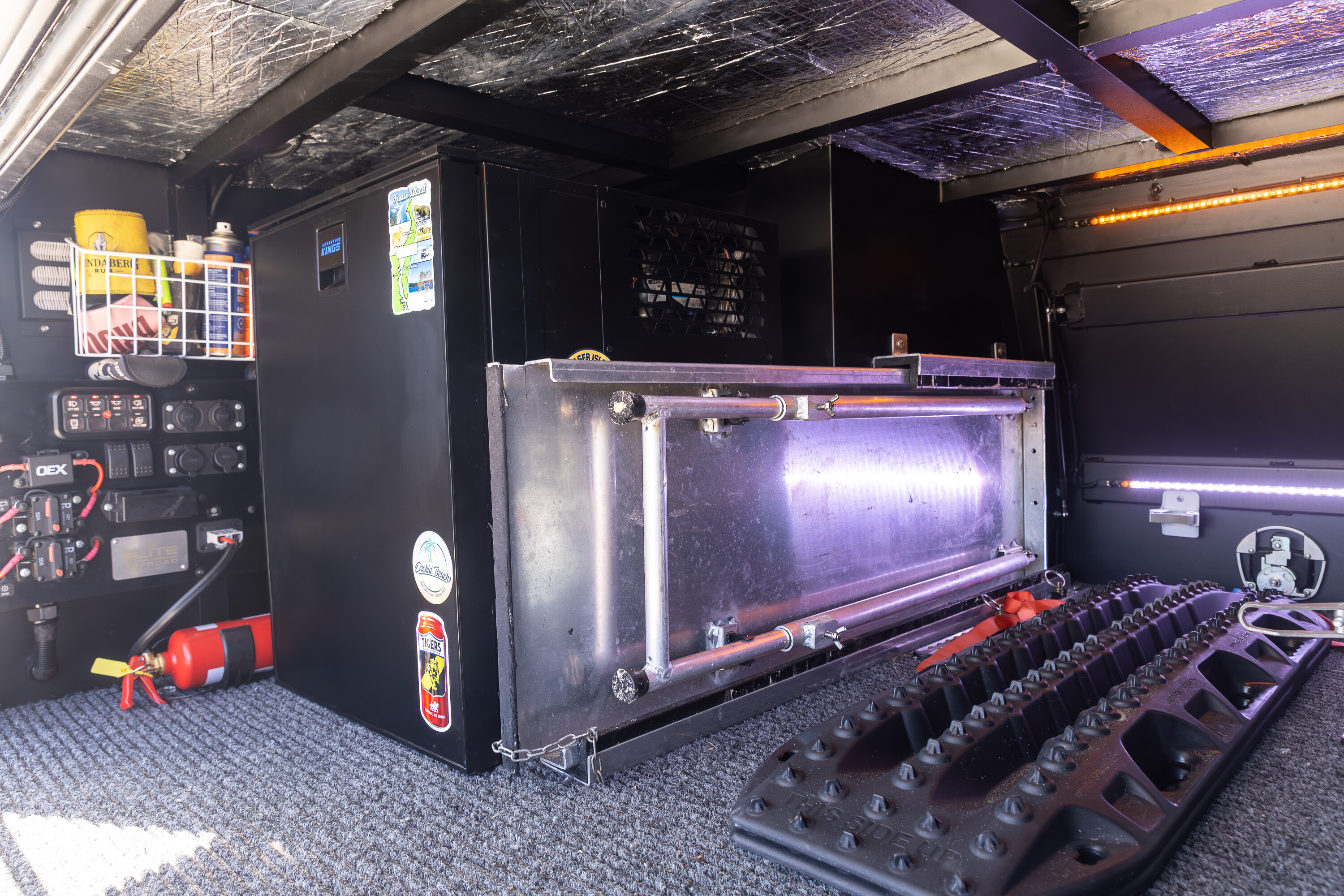
Where to from here?
You may be wondering why there hasn’t been much in the way of engine mods? Well, Royce is saving the best until last.
There’s already a 3-inch exhaust bolted in place, a high-flow air filter, a catch-can for peace of mind, and a 4-inch air intake fed by the Fabulous Fabrications snorkel.
Even so, the ‘real’ mods will start once the PDI intercooler that’s waiting to be mounted goes in. This will allow Procheck Automotive to turn up the wick on the stock tune significantly. Given Royce’s old BT-50 runs 220hp, we’d expect to see at least that out of this 10-year younger model.
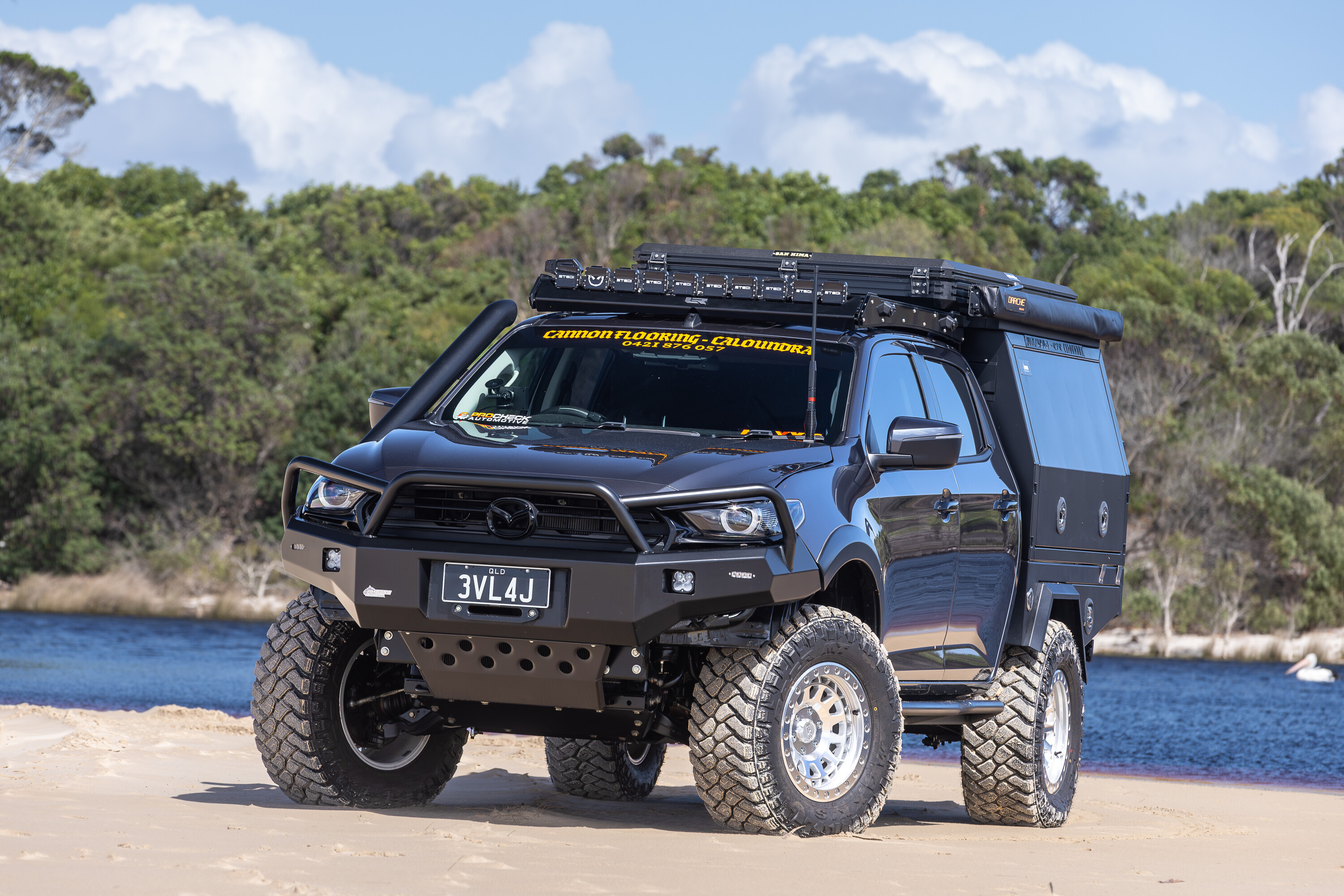
After that, well, Royce and Gabby are just planning on enjoying the hell out of the touring weapon they’ve armed themselves with.
There’s a Cape run happening later this year, followed closely by a trip south to Tasmania. After that, they’re talking seriously about hooking over to WA to see the sights – and there are a lot of them.
No point in having a tourer that can handle everything if you throw nothing at it, eh?
I spend a lot of my time on the road, but that doesn’t mean I don’t like to eat well when travelling, even when in remote locations.
While there’s nothing wrong with cracking open a tin of beans every now and then, that can get monotonous, and I like a bit of variety every few nights, even when I’m down to the bottom of the fridge. I’ve tried many different dehydrated meals over the years and some of them taste like wet cardboard, and many don’t provide enough nutrients after a long day of driving.
I recently discovered a company called On Track Meals (OTM), which has revolutionised prepackaged meals. Brothers Rich and Andrew are the driving force behind OTM and they now supply these prepackaged meals all over the world. Back in 2010, Rich and Andrew led expeditions along the Kokoda Track through their tour company On Track Expeditions. While the expeditions were successful, the meals on offer were a letdown, because the industry standard at the time was freeze-dried food.
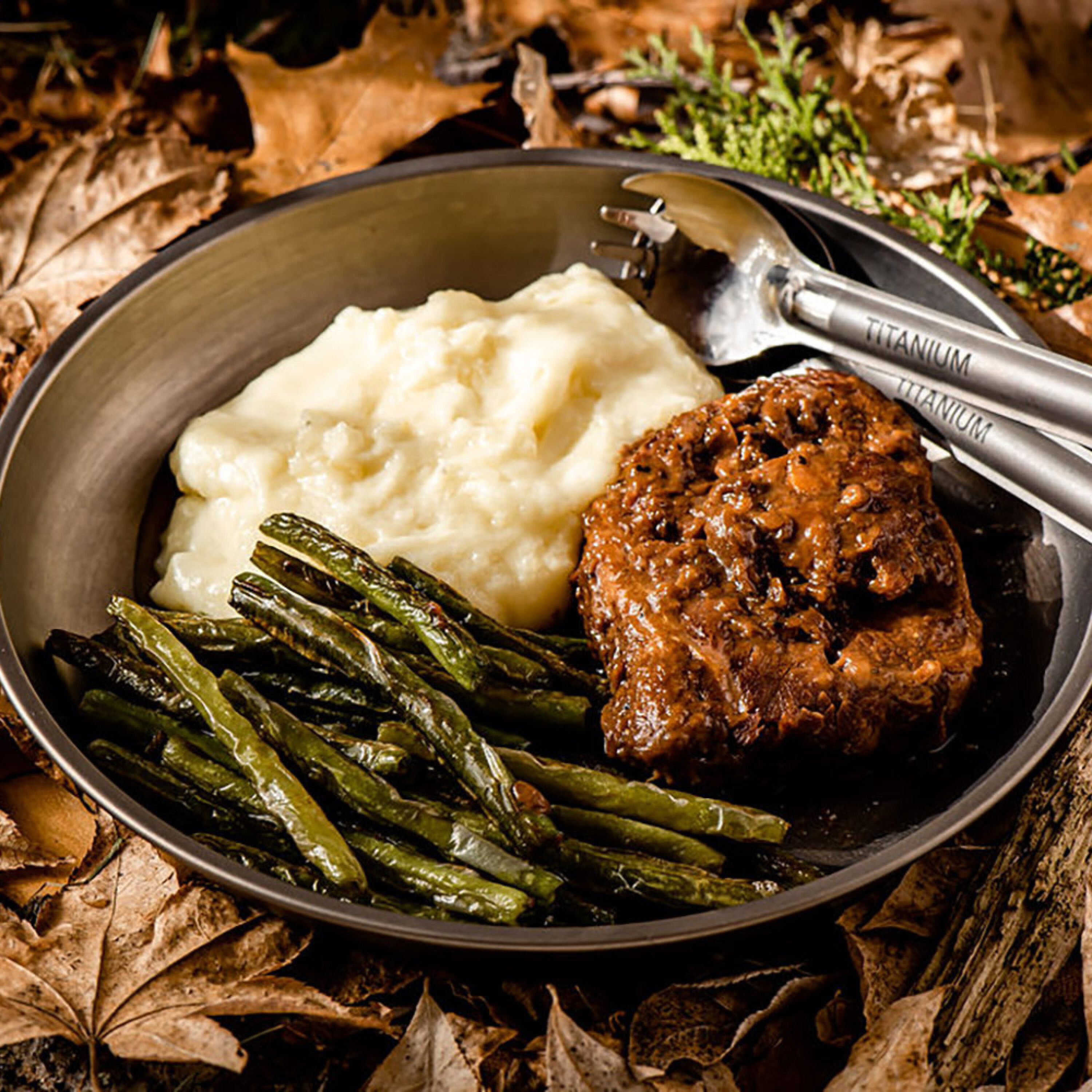
With some careful planning and by teaming up with some industry experts, the brothers soon began cooking real food and packaged it using retort pouch technology, which is where pre-cooked food is placed inside a food-grade sealed package and heated up to 120°C in order to kill any microorganisms. The sealed packaged meals have a three-year shelf life no matter how they are stored, but the best part is the short preparation time for each meal when you’re on the road; simply boil water and drop the pouch in for three minutes and it’s ready to serve and eat.
As well as dinner meals, OTM also does a big brekky, which is so good you can have any time of the day. And you can even buy 24-hour ration packs which include tea, coffee, snacks, a sugar hit, lunch and, of course, dinner. There are also vegan packs, slow-drip coffee bags (from Dog & Gun), summit bars, hydration electrolyte additives, and a huge range of bundle packs. You can also build your own bundles and just keep adding to what your taste buds desire.
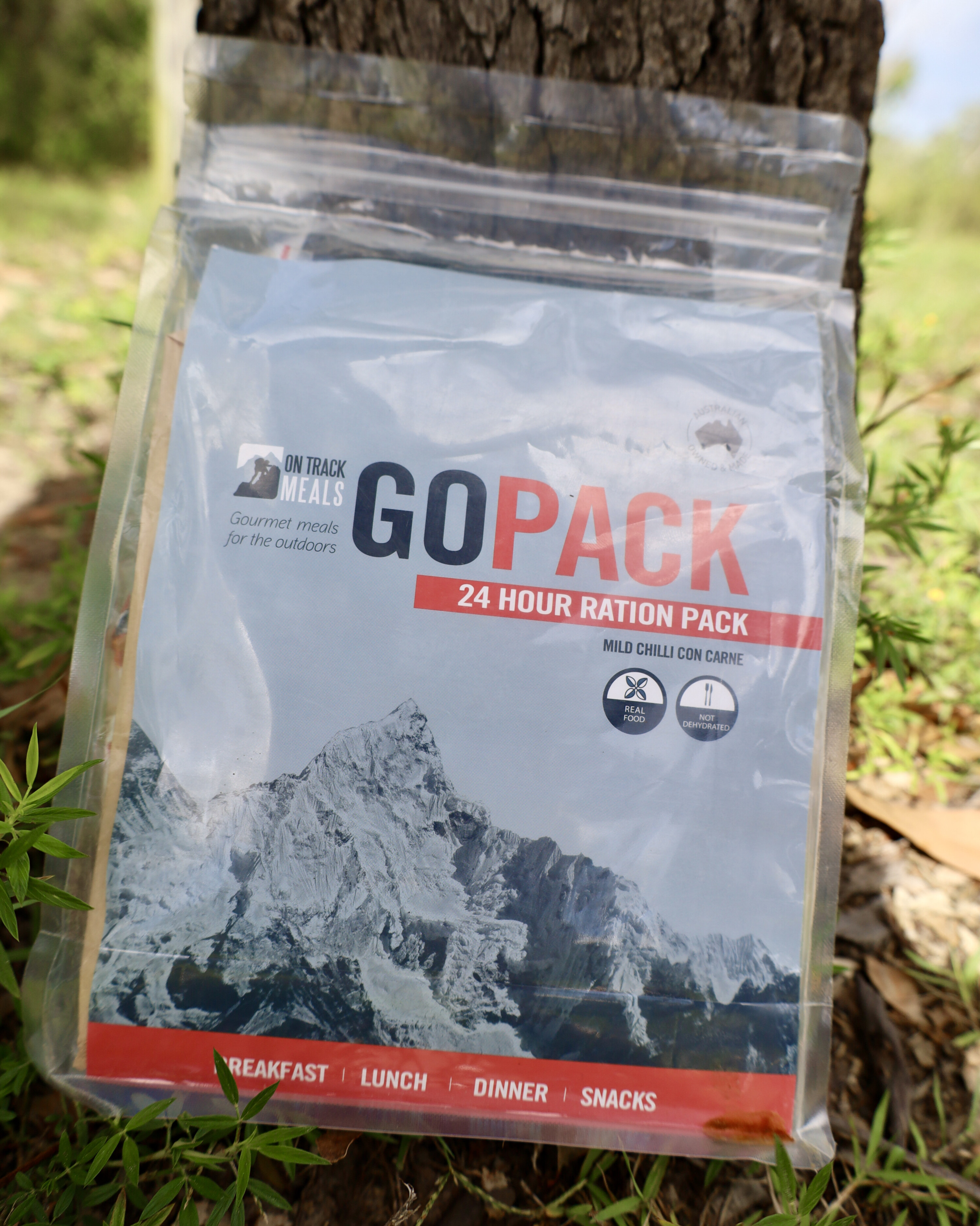
Another great, useful product is the flameless heater bag that can be used for adventures when a fire isn’t a possibility, either due to weather conditions or fire restrictions. These bags are easy to use; just zip open, pop your meal in, fill water to the designated line, close up and the bag heats up, warming your meal in around 10 minutes. Go Packs are another option that are designed for emergency use, such as vehicle breakdowns or for times when you might be trapped somewhere due to flooding.
I have sampled several OTM meals and I am a big fan; the pouches weigh next to nothing, take up very little room in your vehicle, and can be prepared very quickly. The company is Australian-owned and operated, and uses 100-per-cent Australian products where possible.
I can’t decide which meal is my favourite, but some at the top of my list include the Australian slow-cooked beef, the mild chilli con carne, the tender lamb and, for dessert, the coconut rice pudding. In addition to tasting great, all the meals have specific nutritional information printed on them.
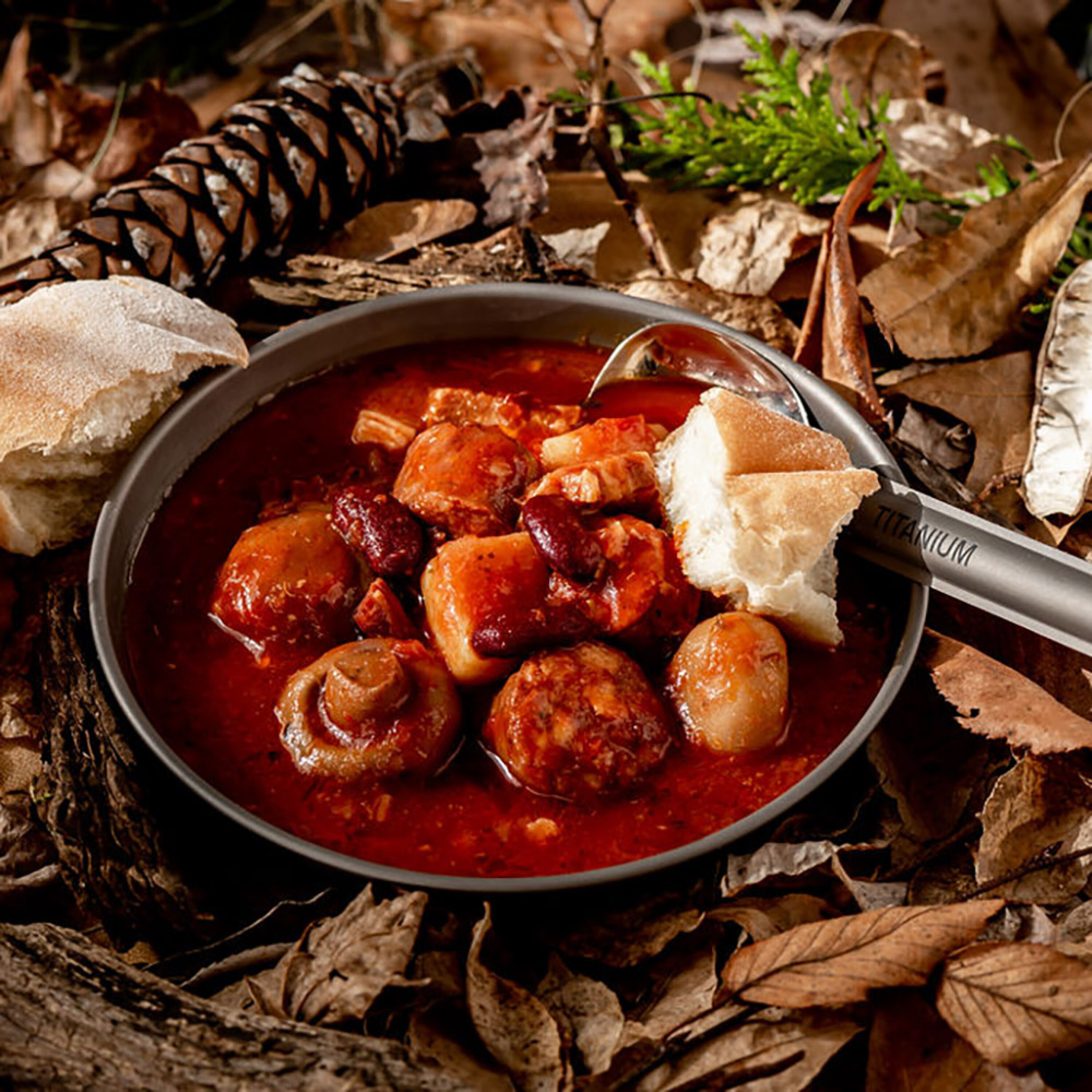
As well as being available to the general public, OTM supplies meal packages to emergency services across Australia, and sister company On Track Expeditions still hosts a wide range of expertly guided tours to destinations like Nepal, Kilimanjaro, Tassie’s Overland Track, Everest Base Camp and, of course, the Kokoda Track.
They might be primarily designed for hikers, but these meal options are well-suited to four-wheel drivers who venture into remote and isolated areas and want to eat something tastier and more nutritious than a can of beans.
You can either order OTM packages online or pick them up in selected camping stores across Australia.
Pricing: From $9.95 (RRP)
The 2024 Mitsubishi Triton landed with a thud in Australian showrooms early in 2024. The general consensus was that it was essentially bigger and better than its predecessor in just about every way. But just how different is it from the previous Triton?
JUMP AHEAD
Dimensions
The Mitsubishi Triton’s dimensions remained remarkably similar since the introduction of the ML Triton in 2006 up until the 2024 model’s predecessor – especially the 3.0-metre wheelbase on the MQ-MR Triton that was built in the same Triton production facility just outside Bangkok, Thailand.
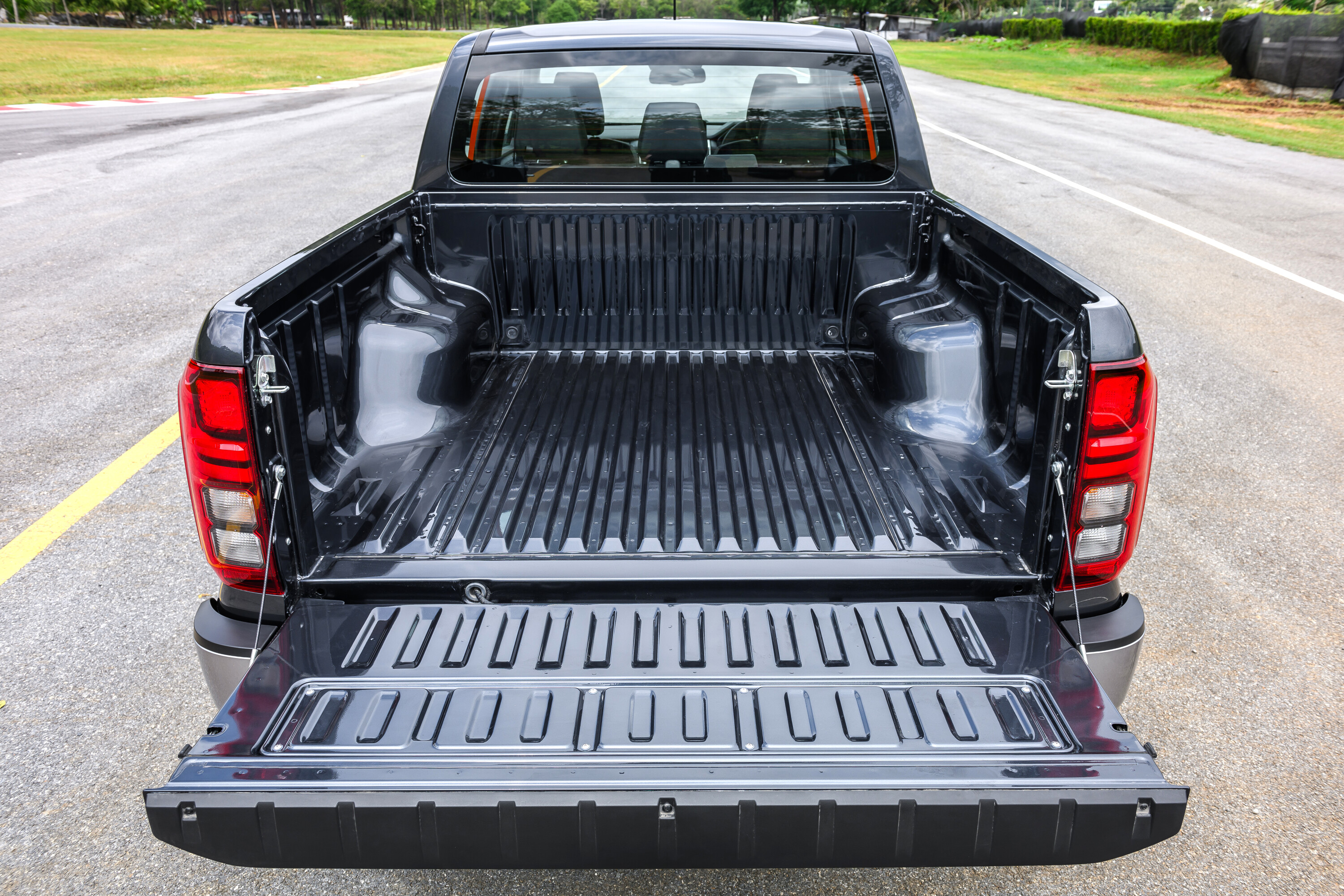
However, the 2024 model has a fresh frame underneath with major changes. It has a wider body, a broader track and rides on a longer wheelbase, but despite this the Triton still remains one of the more compact utes in the segment.
With a larger tub for dual-cab variants (it’s 35mm longer and measures 1545mm at its widest point), the new Triton is able to fit a European pallet behind its wheel-arches. A flattened and grip-taped area on the bumper gives a more ergonomic area to stand and load objects.
| Dimensions (4×4 Dual Cab models) | 2024 Mitsubishi Triton | Old Triton dual cab |
|---|---|---|
| Length | 5320mm | 5305mm |
| Width | 1865mm | 1815mm |
| Height | 1795mm | 1795mm |
| Wheelbase | 3130mm | 3000mm |
| Tray length/width | 1555/1545mm | 1520/1470mm |
| Ground clearance | 222mm | 220mm |
Chassis and towing
Mitsubishi has massively improved the new Triton’s frame, with more high-tensile steel used in the construction.
For 2024, the Triton is now certified to tow 3500kg braked loads, matching segment leaders such as the Ford Ranger, Volkswagen Amarok and Toyota HiLux. By raw figures, the new Triton promises a a 400kg – or 13 per cent – improvement over the old car. The vehicle’s maximum payload has also increased. In GSR trim, for example, the 2024 Triton has a payload capacity of 1030kg, eclipsing the existing 901kg offered by the previous GSR iteration.
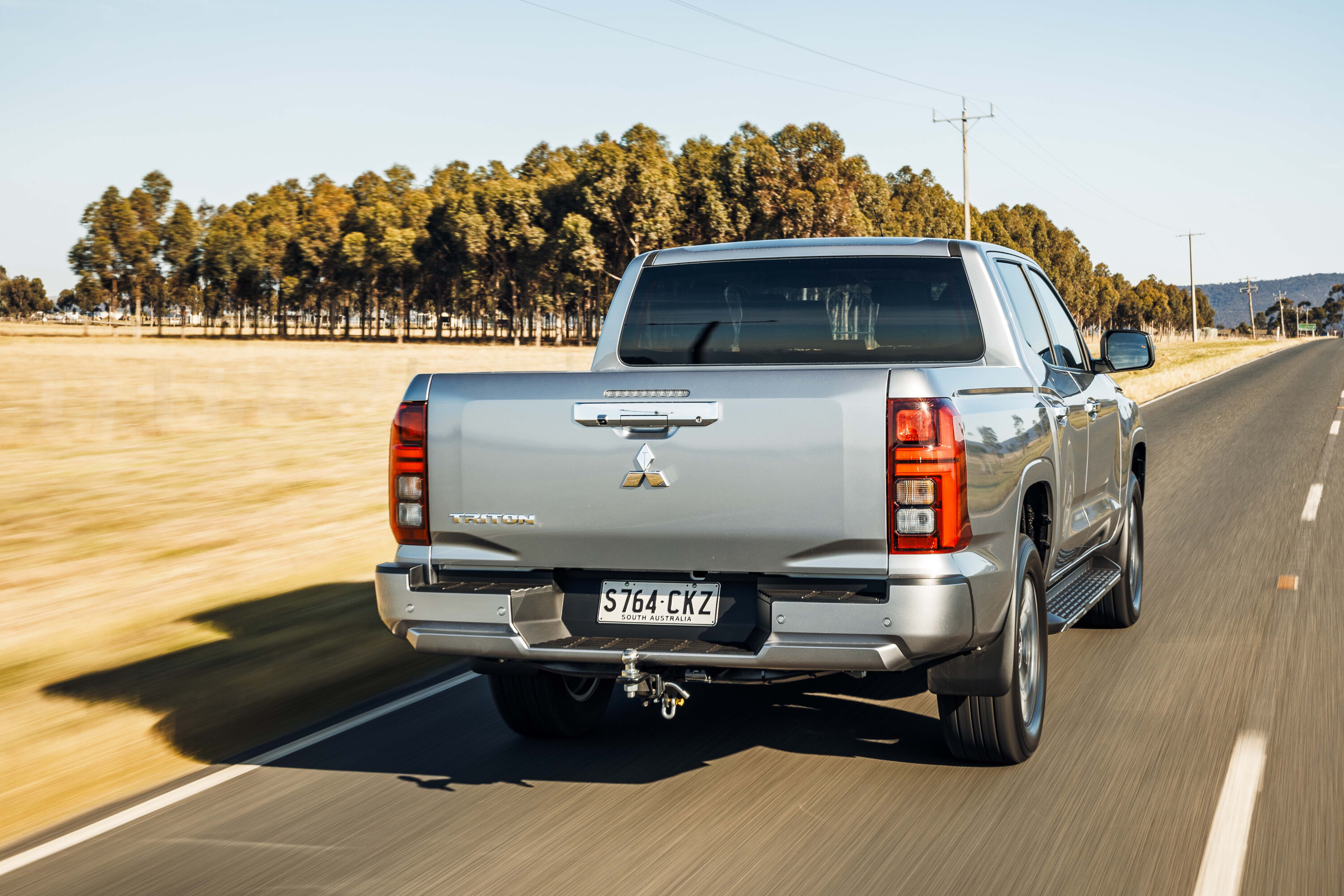
This is partially down to improved power and frame strength, but also due to Mitsubishi’s ability to keep body weight under control. The new Triton’s actual cabin is lighter than the outgoing vehicle thanks to the use 1180MPa high-tensile steel in its construction – though Mitsubishi is yet to confirm the ute’s final kerb weights.
Keeping the tyres in contact with the road are larger diameter dampers that boast 20mm more front suspension stroke thanks to a higher upper mount for the double wishbone suspension. Adding to the refinement, the Triton now gets electric power-assisted steering for the first time, which ought to improve refinement and steering precision over the old hydraulic setup.
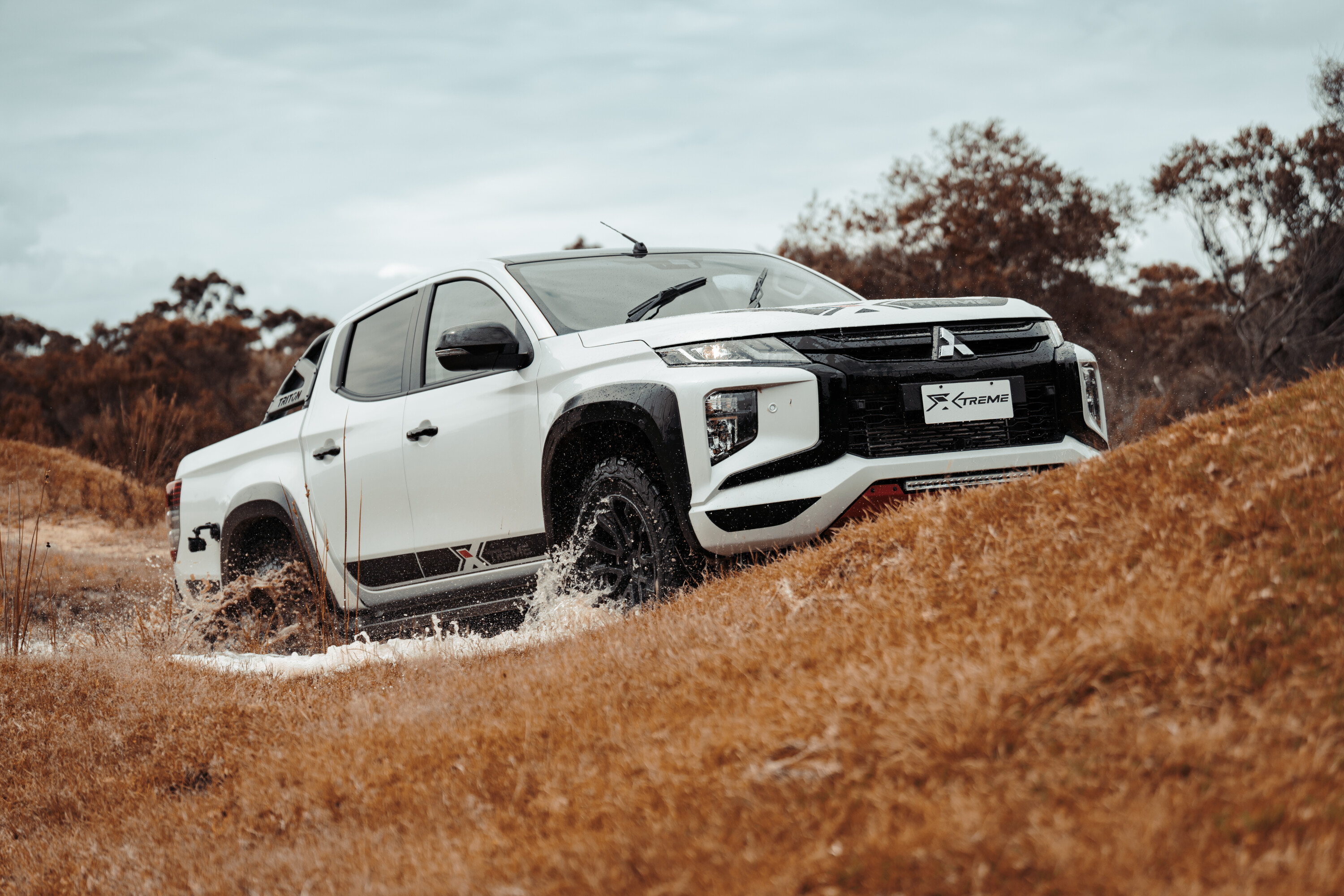
Engines
The new Triton has an extra turbo strapped to what is a very similar 2.4-litre diesel four-cylinder engine.
It was automatic-only at launch, but lower grades are now offered with a six-speed manual with cable, rather than linkage, actuation. The extra turbo, new injectors and other revisions see the Triton’s outputs jump 17kW and 20Nm.
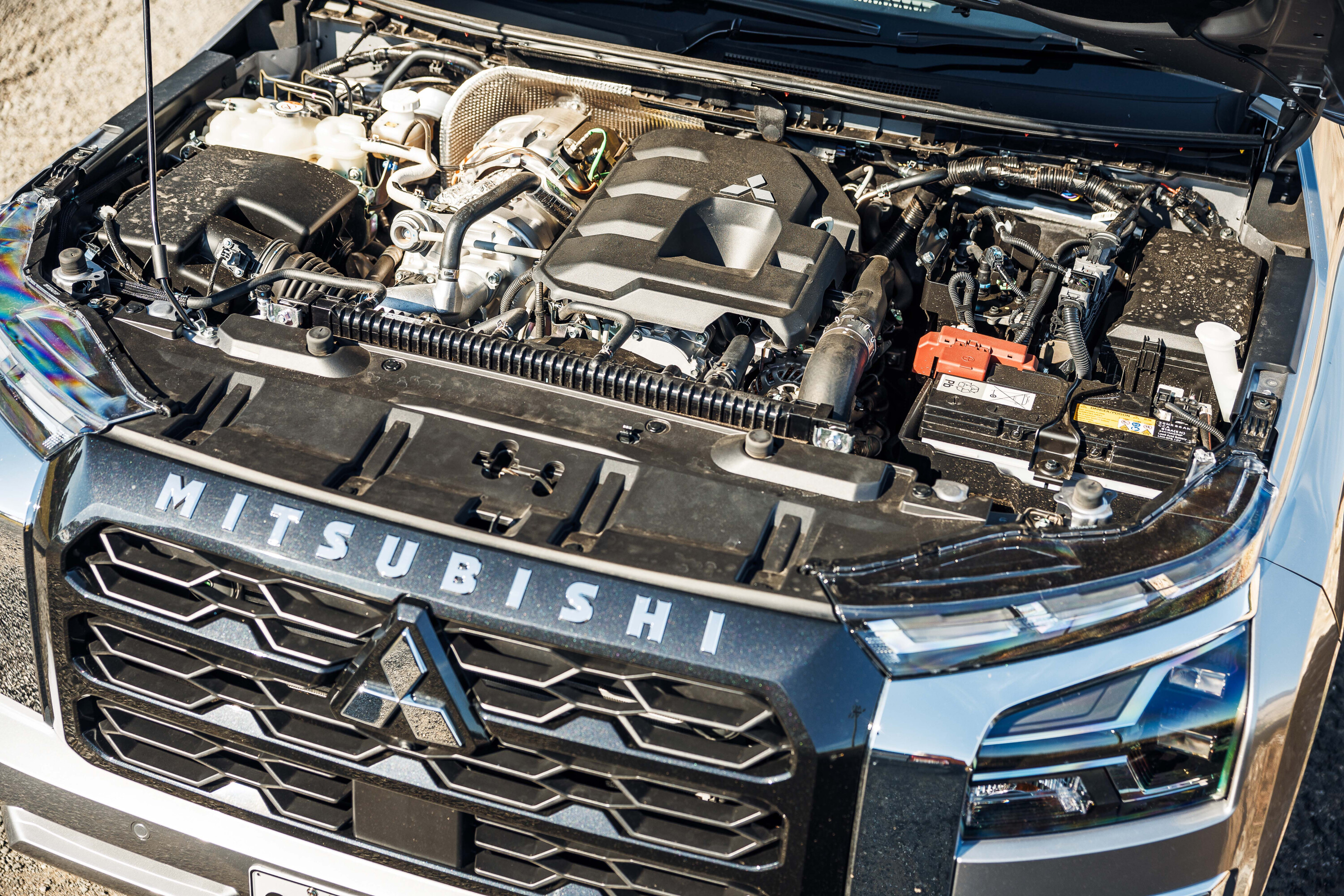
Power levels are now in line with the Toyota HiLux, though torque lags behind best-in-class than the Ranger/Amarok’s 600Nm V6
Under the bonnet of the new Triton is a 2.4-litre twin-turbo diesel four-cylinder producing 150kW/470Nm, mated to either a six-speed automatic or a revised six-speed manual transmission.
| Specifications | 2024 Mitsubishi Triton GSR | 2023 Mitsubishi Triton GSR |
|---|---|---|
| Engine | 2.4L twin-turbo diesel four cyl | 2.4L single-turbo diesel four cyl |
| Transmission | Six-speed auto/man | Six-speed auto/man |
| Power | 150kW | 133kW |
| Torque | 470Nm | 430Nm |
| ADR 81/02 fuel use | 7.7L/100km | 8.6L/100km |
| Kerb weight | 2170kg | 1999kg |
| Payload | 1030kg | 901kg |
| Towing Capacity (braked) | 3500kg | 3100kg |
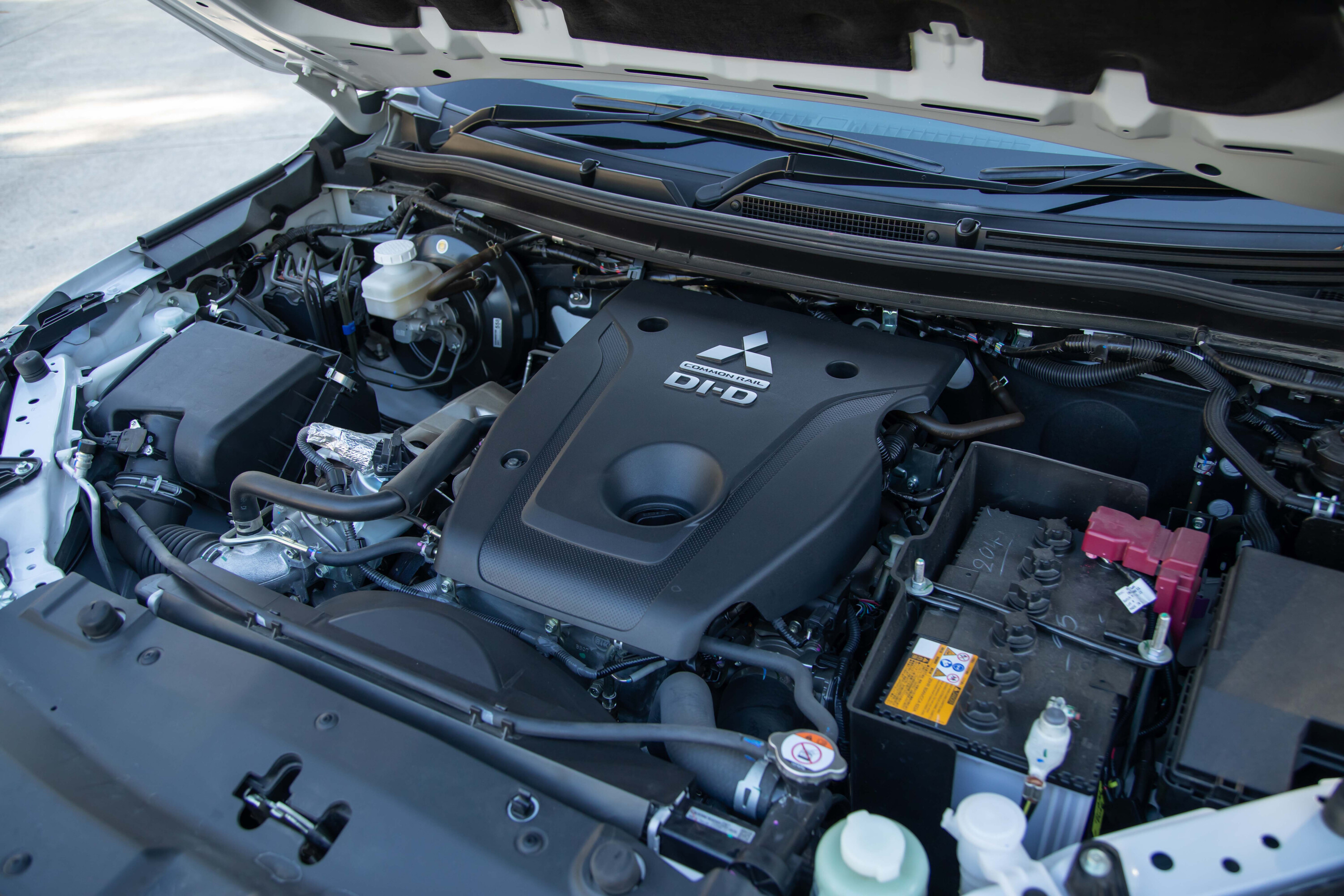
Interior and cabin design
The old Triton’s dated interior is replaced by a new vertical Outlander-inspired design with a whole lot more digitisation.
A 9.0-inch touchscreen features in the centre of the new Triton’s dash (replacing a very Supercheap Auto-looking 7.0-inch item) with satellite navigation, traffic sign recognition, wireless Apple CarPlay (and wired Android Auto). Connected-vehicle services such as ute status, and remote locking via a smartphone application are new, too – but the last feature is unlikely for Australia initially. Still, it’s a big upgrade on the old Triton’s analogue chic.
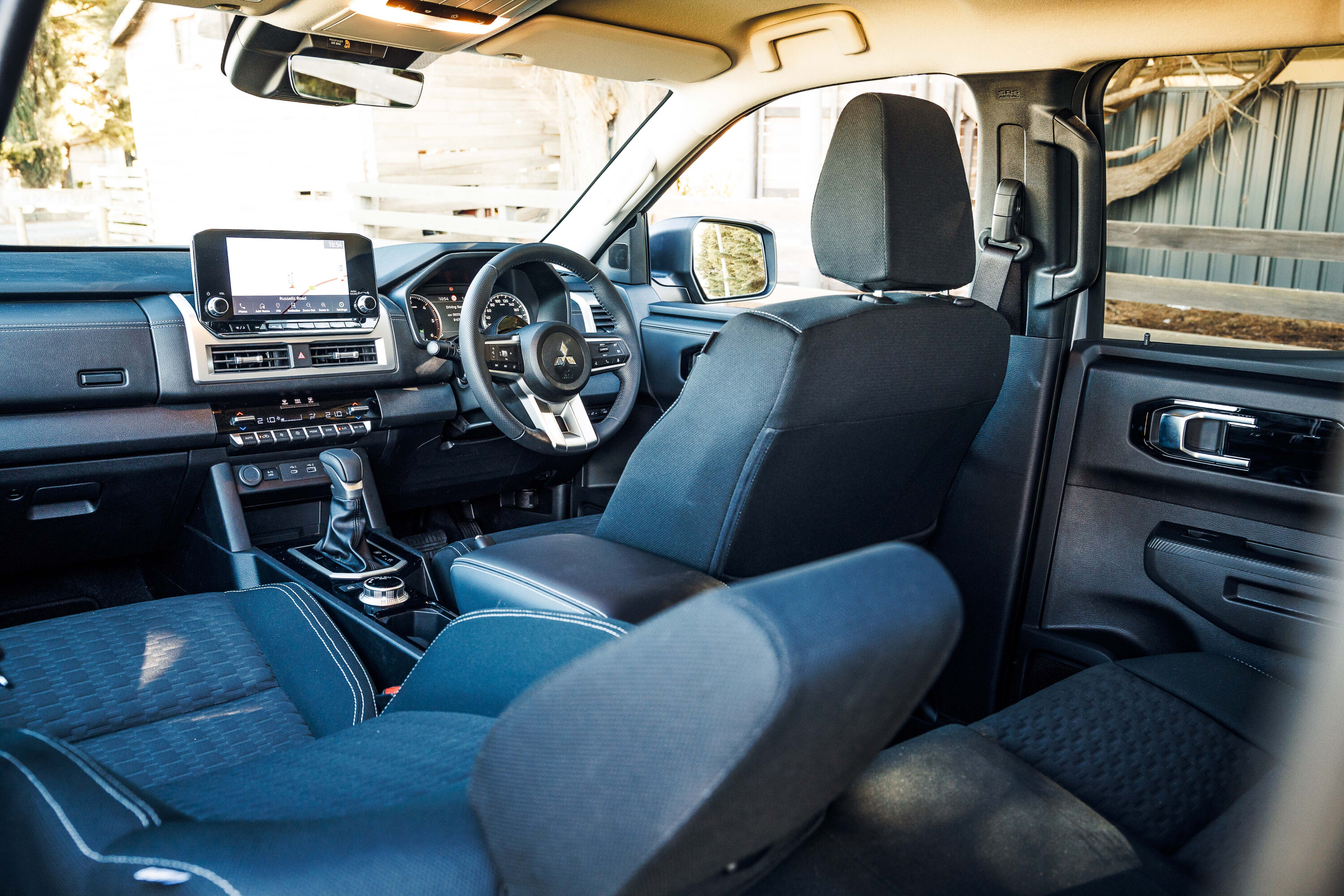
The front seats have been totally overhauled and are now comfortable and supportive, replacing the flat and firm items from before.
Adding length to the wheelbase improves rear seat occupant space, which is also helped by the 50mm wider cabin of the new, squarer Triton. Higher quality materials, borrowed from the Outlander, add to an enhanced sense of luxury within the new ute. Rear seat passengers retain the roof-mounted air vents and high-spec trims get USB charge points as well as a fold-out centre armrest.
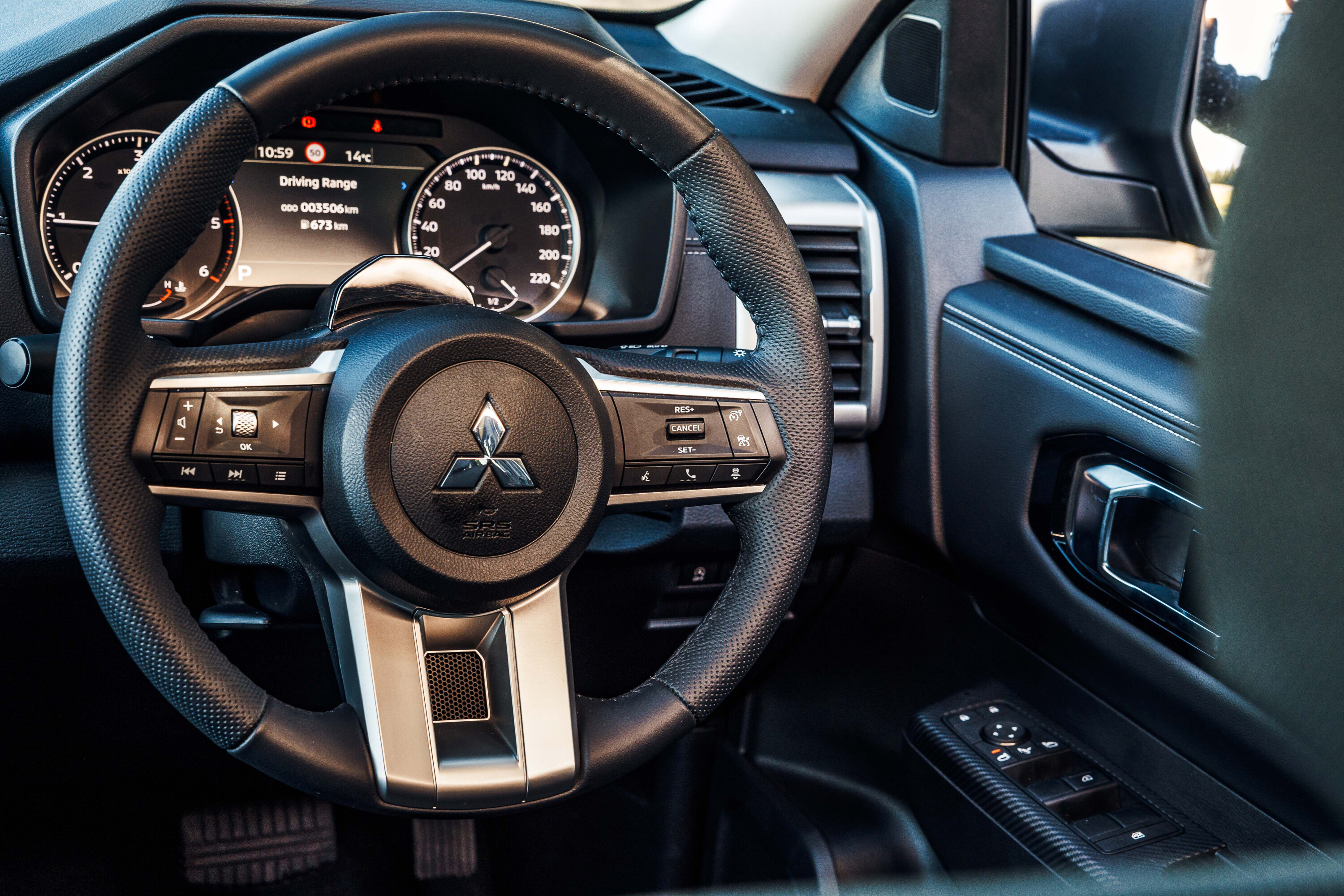
Pricing
The 2024 Triton is, as expected, more expensive than the outgoing model.
Comparatively, the previous-gen Triton GSR cost $56,490 before on-road costs, while the MY24 GSR costs $63,840 before on-road costs (that’s a difference of $7350). Not surprising considering all the improvements and its upmarket cabin.
| 2024 Mitsubishi Triton variant | MY24 pricing (before on-road costs) | MY23 pricing (before on-road costs) |
|---|---|---|
| GLX+ 4×4 club-cab pick-up | $50,340 | $45,440 |
| GLX 4×4 dual-cab pick-up | $50,940 | $43,690 |
| GLX+ 4×4 dual-cab pick-up | $53,290 | $47,190 |
| GLS 4×4 dual-cab pick-up | $59,090 (Leather + $1500) | $51,490 / $54,940 |
| GSR 4×4 dual-cab pick-up | $63,840 | $56,490 |
As our Triton build rapidly came to completion, it was time to make sure no little mishaps or spills ruined our day or, more importantly, our brand-new Triton seats.
No doubt every tradie has experienced rips, cuts and serious stains that have ruined seats due to a momentary brain fart, where someone has forgotten about an item in their pocket or spilled something. And any car seat product made for tradies needs to take a substantial step-up in design, material choice and overall fit.
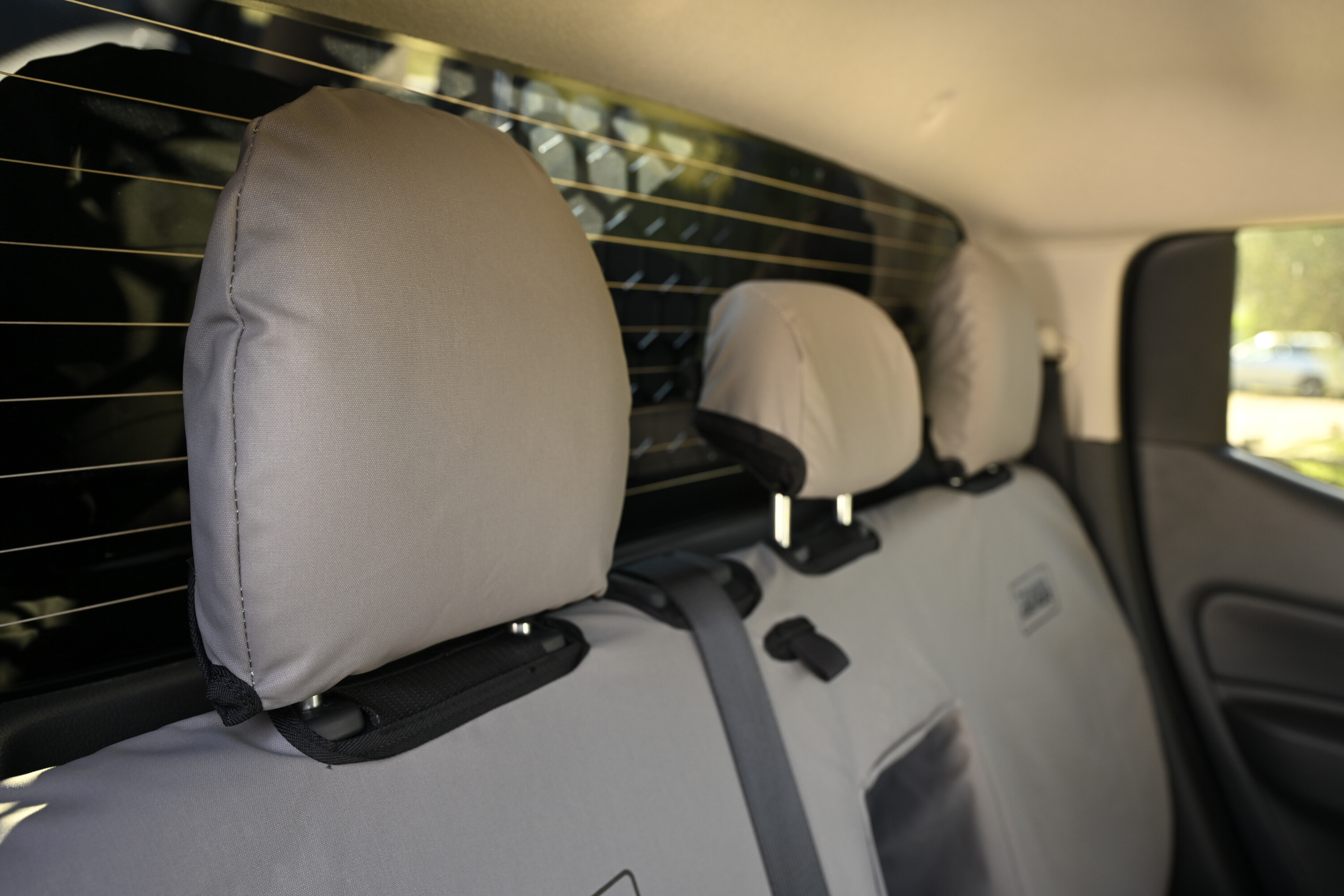
The team at MSA 4×4 has listened to what tradies have asked for and delivered on those exact requirements. The material of choice is the backbone of the MSA Tradie Gear Seat Cover, with a rugged yet comfortable double-layered 550gsm 16-ounce canvas. This poly/cotton canvas is the ultimate material; it’s tough, durable, waterproof, breathable, and has a natural, comfortable feel that outlasts any other fabric. It significantly outperforms 100-per-cent cotton.
While this canvas is robust, it can be rough; so MSA includes a soft poly/cotton layer to shield seats from damage while maintaining durability. For added protection, MSA infuses its canvas with DuPont Teflon Repel, creating a breathable yet protective barrier. Keeping any coffee spills relatively drama-free if a mishap occurs.

MSA Tradie Gear Seat Covers work perfectly with airbags and safety features, and they’re ADR crash-test certified. MSA’s commitment to safety is often overlooked, but it is an essential feature in the event of an accident.
Tailored to perfection – and with extra layers on high-wear areas, as well as standard map pockets – these MSA 4×4 seat covers offer the quality you need as a tradie looking to protect your original seats.
They look great on the Triton and will protect the seats on challenging Australian residential and commercial building sites for a long, long time.
-
Dometic CoolMatic CRX 50 upright fridge
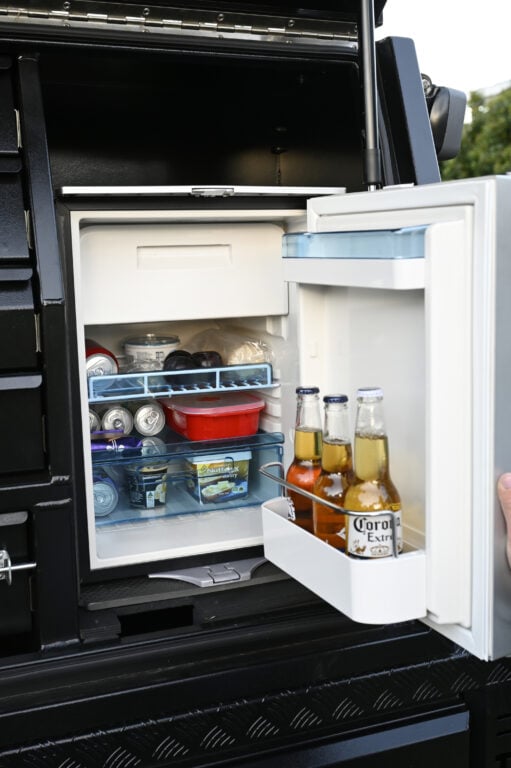
-
Cel-Fi GO mobile booster
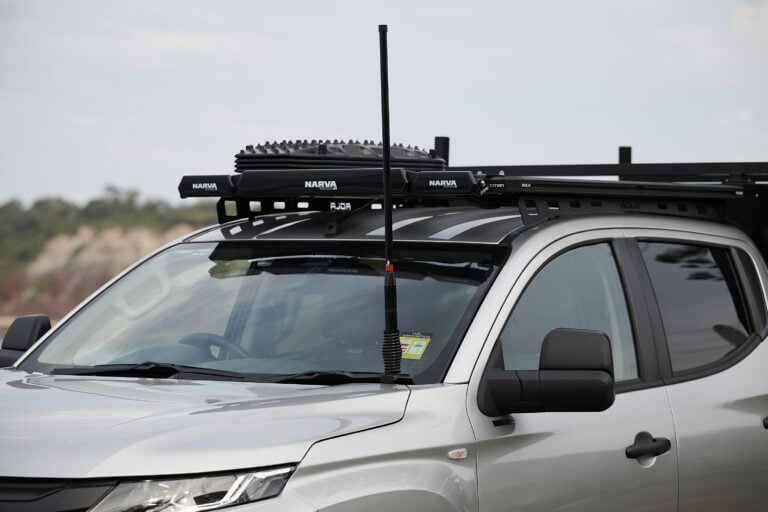
-
MSA 4×4 towing mirrors
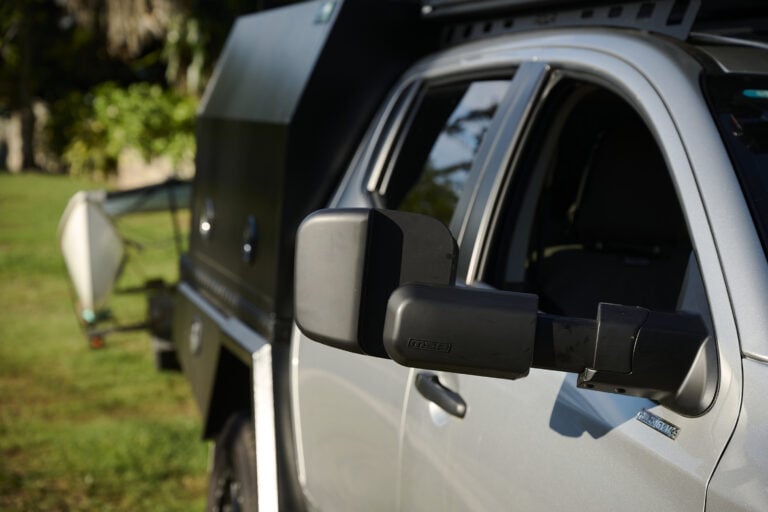
-
Projecta power management
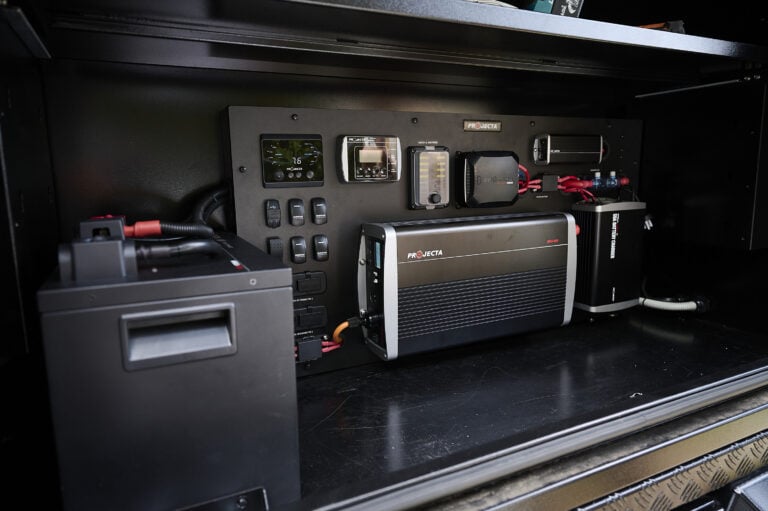
-
Narva LED lights
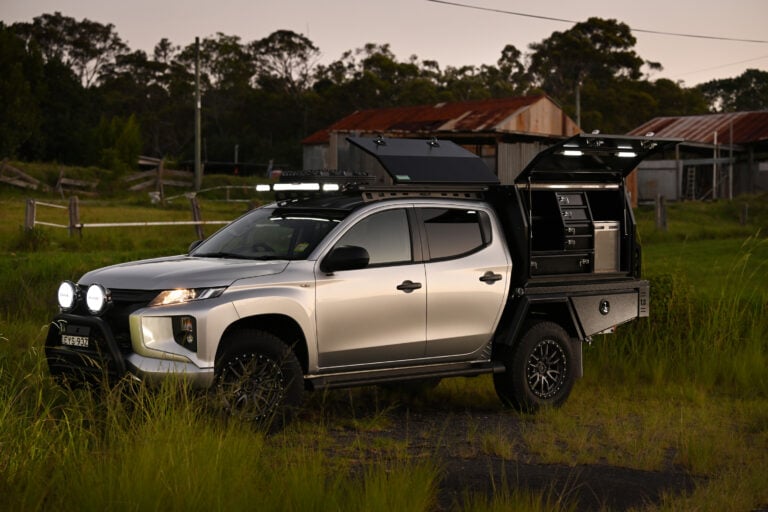
-
Pedders GVM and brake upgrade
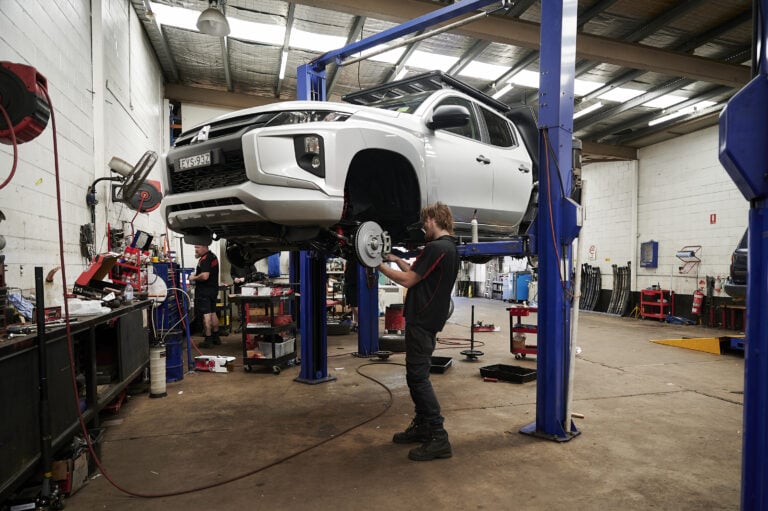
-
Maxtrax recovery kit
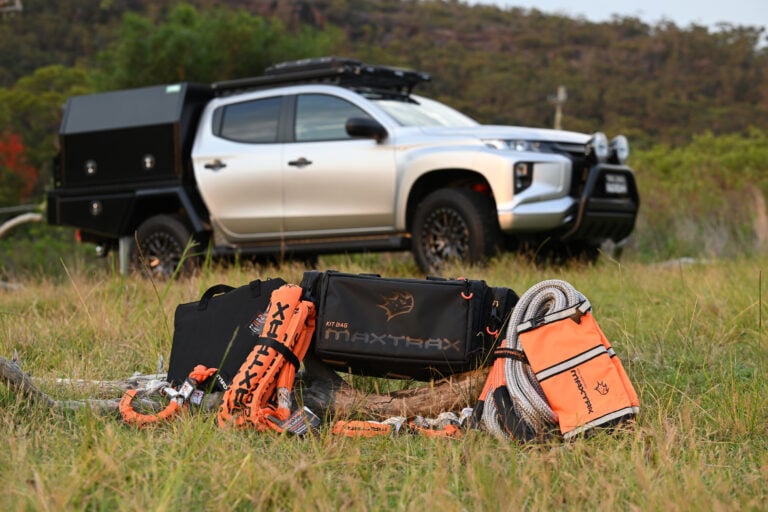
-
PIAK nudge bar
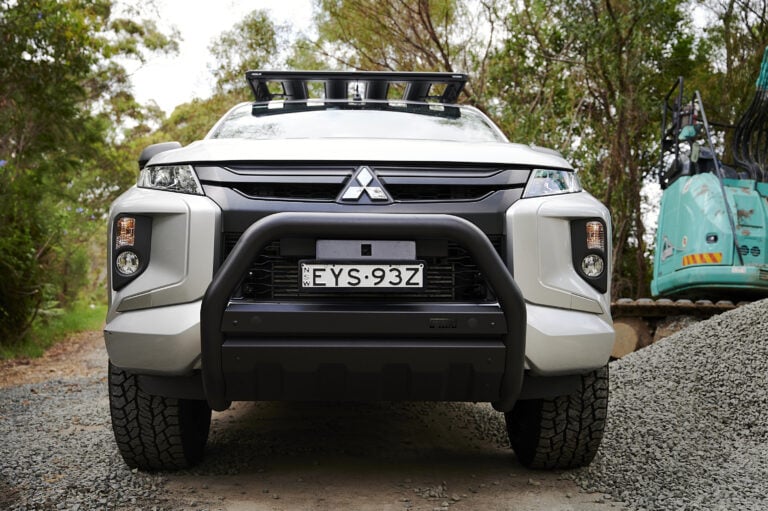
-
Hayman Reese X-Bar
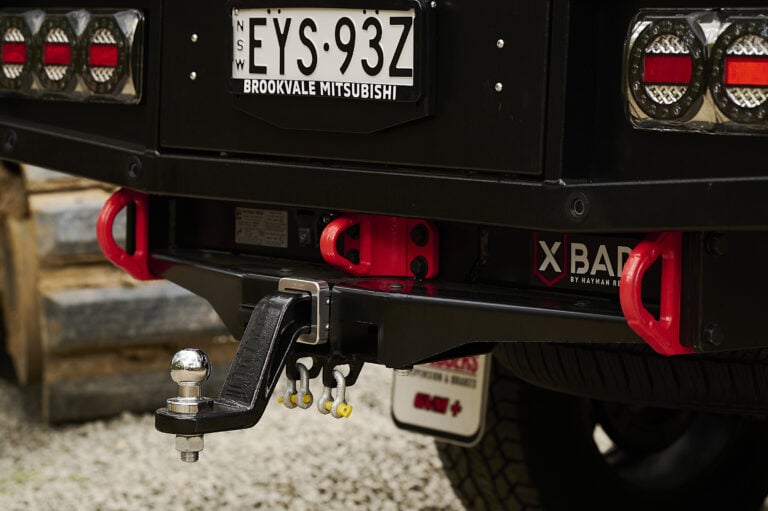
-
Rola MKIII Titan Tray
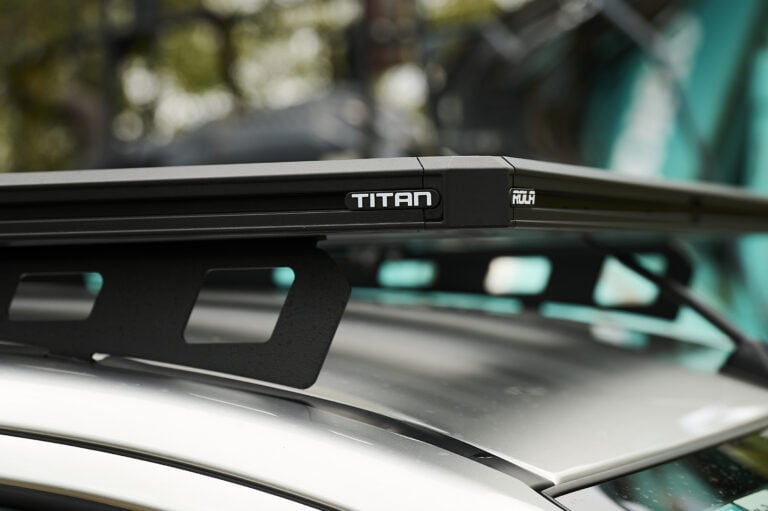
-
TruFit 3D mats
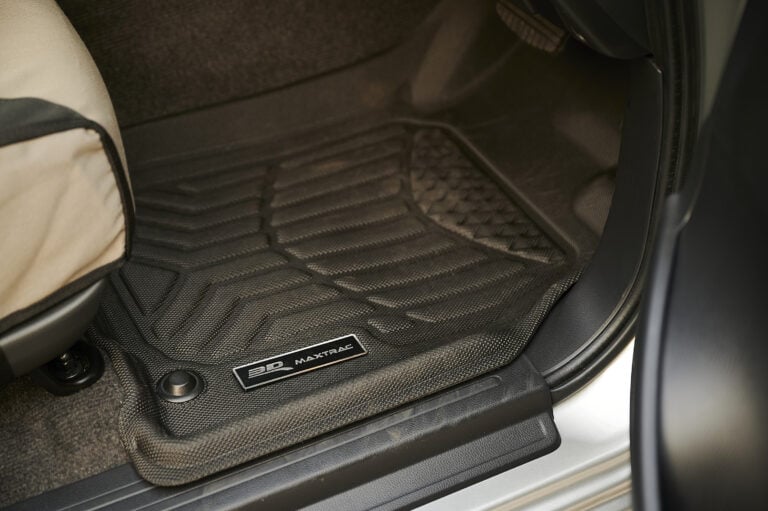
-
Fuel Rebel wheels
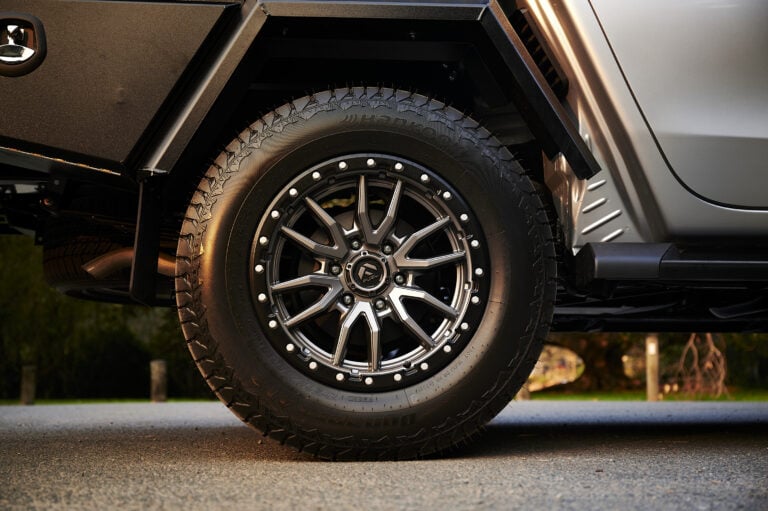
-
Hankook Dynapro AT2 tyres
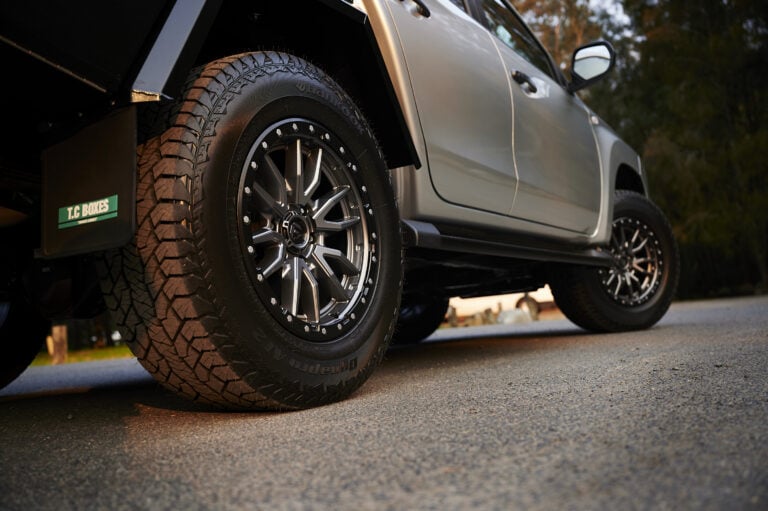
-
TC Boxes tray and toolbox
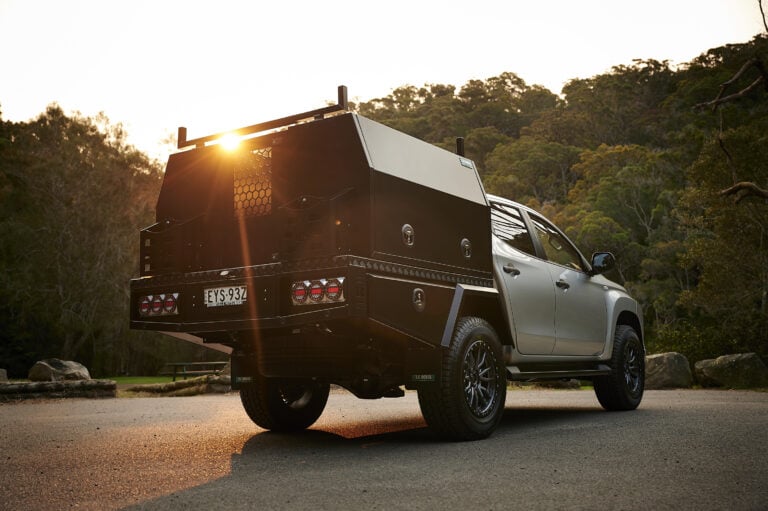
The Ranger juggernaut continues to steamroll Australian sales charts, with the Blue Oval passing 30,000 year-to-date deliveries of 4×4 variants at just the halfway point of 2024.
Ford ended the month of June with a total of 30,620 Ranger 4×4 units delivered to customers, forging ahead of the Toyota HiLux 4×4 (24,980) and Isuzu D-MAX 4×4 (12,441). The Ranger again eclipsed the HiLux on the monthly 4×4 sales charts, registering 866 more sales in June (5842 vs 4976). The D-MAX notched up 2222 4×4 sales.
It’s a similar story when combining 4×4 and 4×2 variants, with the Ford Ranger remaining the best-selling overall vehicle in Australia with 6289 sales in June. It was followed by the HiLux (5630), Toyota RAV4 (3907), Mitsubishi Outlander (3045), Tesla Model Y (2906) and Isuzu D-MAX (2881).
Both the Ranger and D-MAX have seen a dramatic increase in sales in June 2024 compared to June 2023 – the Ranger up 17.9 per cent; the D-MAX up 15.2 per cent. However, HiLux sales have dipped by 8.3 per cent.
The large SUV segment saw the Everest and MU-X continue to sell well, with both vehicles surpassing 10,000 year-to-date sales in June. The Everest ended the month with 11,276 YTD sales; the MU-X with 10,083. The Everest also edged out the MU-X to remain Australia’s most popular wagon for the month (2267 vs 1564). Compared to June 2023, Everest sales were up a whopping 96.6 per cent last month (2267 vs 1153).
Sales of all three budget brawlers – LDV T60, GWM Ute and SsangYong Musso – were up in June (726, 890 and 511) compared to May (510, 685 and 420), with the thrifty GWM once again the most popular. At the heavy-hitting end of the market, the Chevrolet Silverado (368) outsold the Ram 1500 (341) and Ford F-150 (112).
The SUV and Light Commercial (LCV) segments of the Australian market remain the most popular, representing 54.5 per cent and 23.3 per cent respectively of the monthly sales figures. The Medium SUV segment heads the pack with 142,307 YTD sales (22.5 per cent of the market), with the PU/CC 4×4 segment in second spot with a total of 108,062 YTD sales (17.1 per cent of the market).
Best-selling 4x4s in June 2024
| 1: Ford Rangeru00a0 | 5842 |
|---|---|
| 2: Toyota HiLuxu00a0 | 4976 |
| 3. Ford Everestu00a0 | 2267 |
| 4: Isuzu D-MAXu00a0 | 2222 |
| 5: Isuzu MU-X | 1564 |
| 6: Mitsubishi Tritonu00a0 | 1496 |
| 7: Toyota LC300u00a0 | 1288 |
| 8: Mazda BT-50 | 1190 |
| 9: Toyota LC70u00a0 | 1169 |
| 10: Nissan Navara | 1032 |
Best-selling 4x4s so far in 2024
| 1: Ford Rangeru00a0 | 30,620 |
|---|---|
| 2: Toyota Hiluxu00a0 | 24,980 |
| 3: Isuzu D-MAXu00a0 | 12,441 |
| 4: Ford Everestu00a0 | 11,276 |
| 5: Isuzu MU-Xu00a0 | 10,083 |
| 6: Toyota LC300u00a0 | 8199 |
| 7: Mitsubishi Tritonu00a0 | 7626 |
| 8: Mazda BT-50 | 6239 |
| 9: Toyota LC70u00a0 | 6199 |
| 10: Nissan Navarau00a0 | 5052 |
Land Rover has unleashed its most powerful Defender ever, with the twin-turbo V8-powered Defender OCTA officially introduced by the British marque.
First teased in March this year, the Defender OCTA will fetch an eye-watering price of close to $300,000, with Land Rover listing an indicative price from $291,542 (plus on-road costs) in Australia.
Its twin-turbo V8 is a 4.4-litre mild-hybrid unit mated to an eight-speed automatic transmission with high and low range. It can generate a neck-snapping 467kW and 750Nm, enough to propel the OCTA from 0-100km/h in a claimed four seconds. Peak torque is available from 1800rpm through to almost 6000rpm.
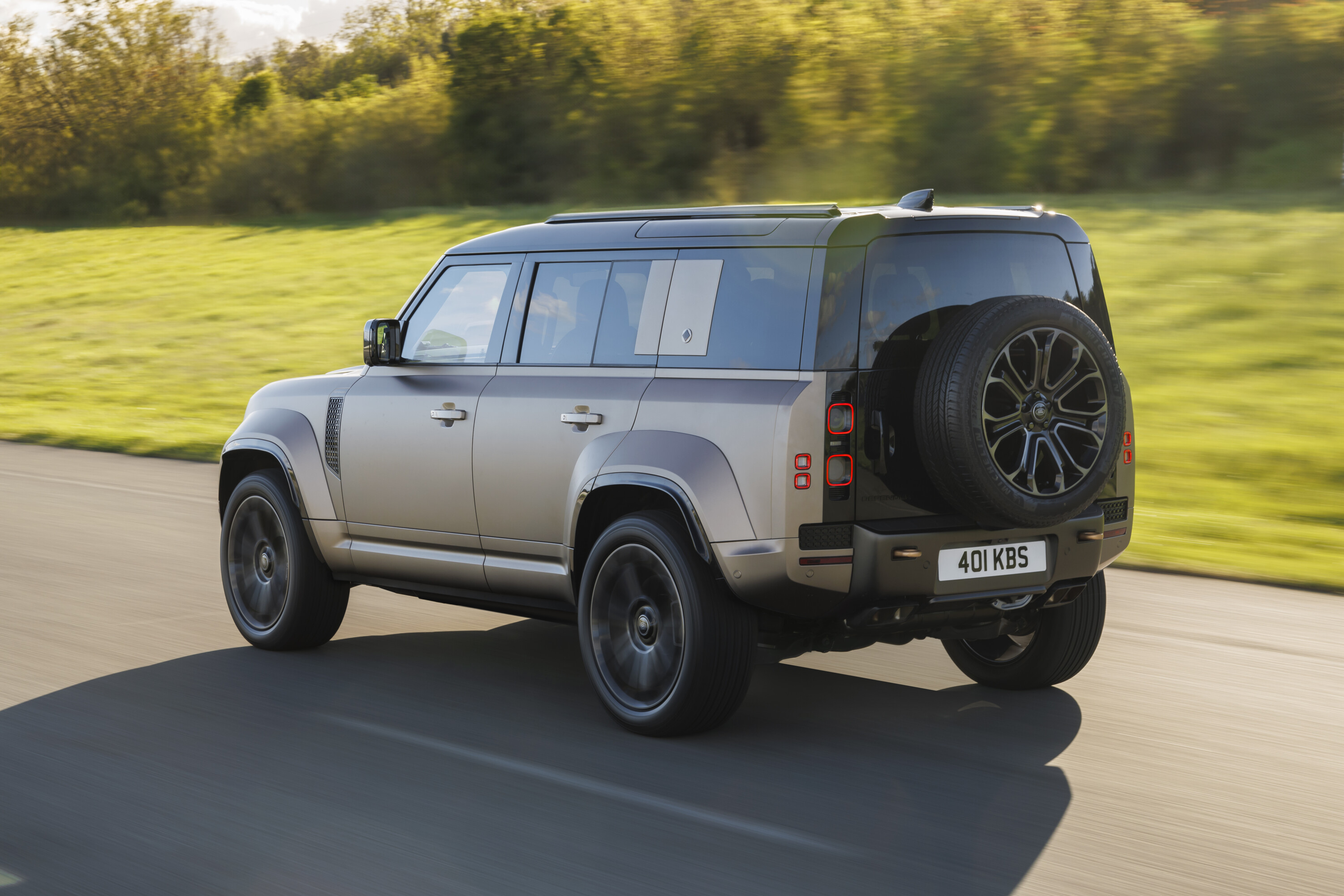
Just as impressive is the introduction of an intelligent hydraulic suspension system never seen before in a Defender. The suspension technology dubbed 6D Dynamics is “an advanced network of hydraulically-interlinked continuously variable semi-active dampers”. It essentially eliminates pitch and body roll for supreme on-road comfort and refinement, and enables greater wheel articulation for stronger off-road prowess.
It’s largely the same tech you’ll find on road-focused luxury SUVs like the Porsche Cayenne and Audi RS Q8. The uprated suspension also includes longer wishbones, and unique active dampers with separate accumulators.
Also aiding off-road pursuits, the OCTA features an off-road driving mode with a performance focus. Called OCTA mode, this includes an Off-Road Launch mode, as well as specific ”Off-Road ABS” calibration to maximise braking performance.
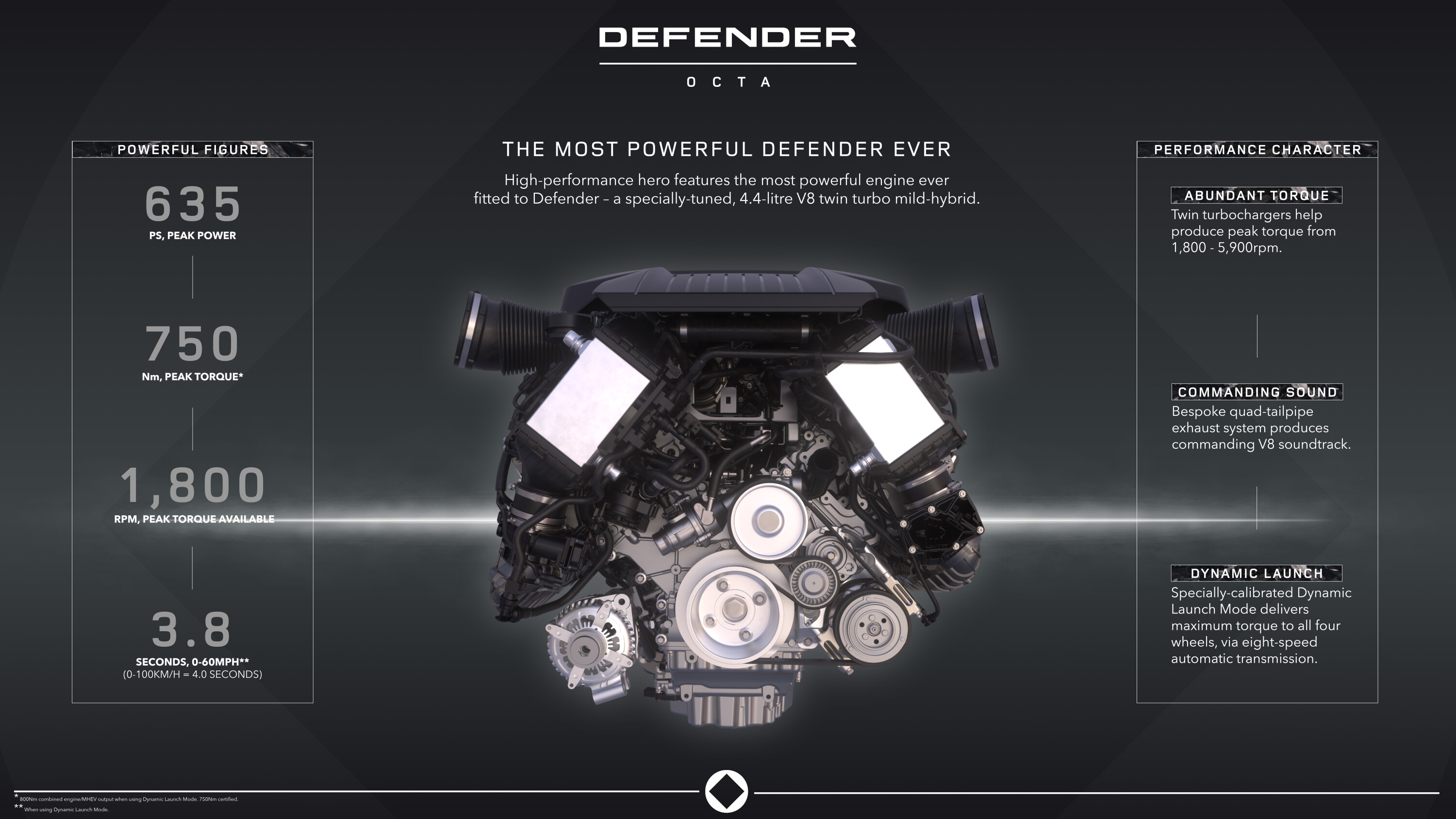
Familiar Terrain Response modes are carried over, including Sand, Mud and Ruts, Grass Gravel Snow, and Rock Crawl modes. Plus, the OCTA gets ClearSight Ground View, which makes the bonnet transparent (on the screen), a boon when descending or ascending tricky off-road terrain.
“With New Defender OCTA we have been able to unlock the full potential of Defender. It is the very definition of breadth of capability, and a testament to what we can achieve utilising the very best technologies and talents within our engineering division,” said Mark Cameron, Managing Director, Defender.
“With its powerful V8 engine, ground-breaking 6D Dynamics suspension technology, exquisite finishes and unique detailing, it is rare, incredibly tough and inherently desirable.”
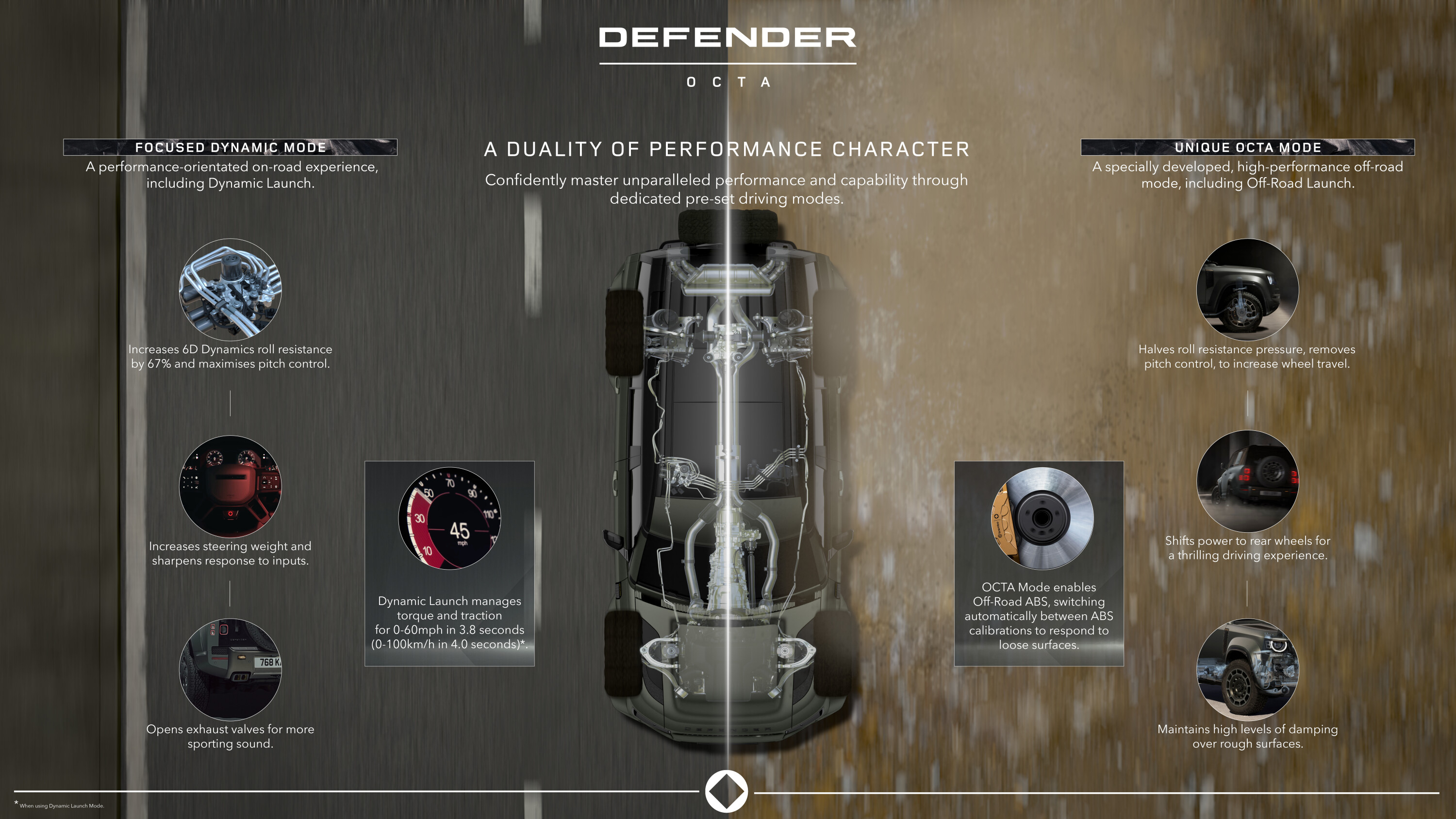
The Defender OCTA is 28mm higher and 68mm wider than a standard 110. It has 400mm front brake discs with Brembo callipers, and it wears 33-inch tyres (the largest ever for a production Defender) inside Goodyear all-terrain tyres that were developed specifically for the OCTA. All-new, trick Performance Seats with integrated Body and Soul Seat audio technology can be found in the cabin.
The high-performance hero variant is set to debut at the 2024 Goodwood Festival of Speed from 11–14 July.
If you’ve always wanted to swap in a HEMI V8 into your 4×4 tourer, Mopar Australia has just unleashed a limited number of these powerful production engines.
Available to order now from Jeep dealerships, the two HEMI V8s available include the 6.2-litre supercharged Crate HEMI V8 first seen in the Jeep Grand Cherokee Trackhawk, and Mopar’s 6.4-litre 392 Crate HEMI V8 lifted from the Grand Cherokee SRT.
The 6.2-litre V8 “Hellcrate” produces a stonking 527kW and 881Nm, while the 6.4-litre 392 generates 361kW and 644Nm.
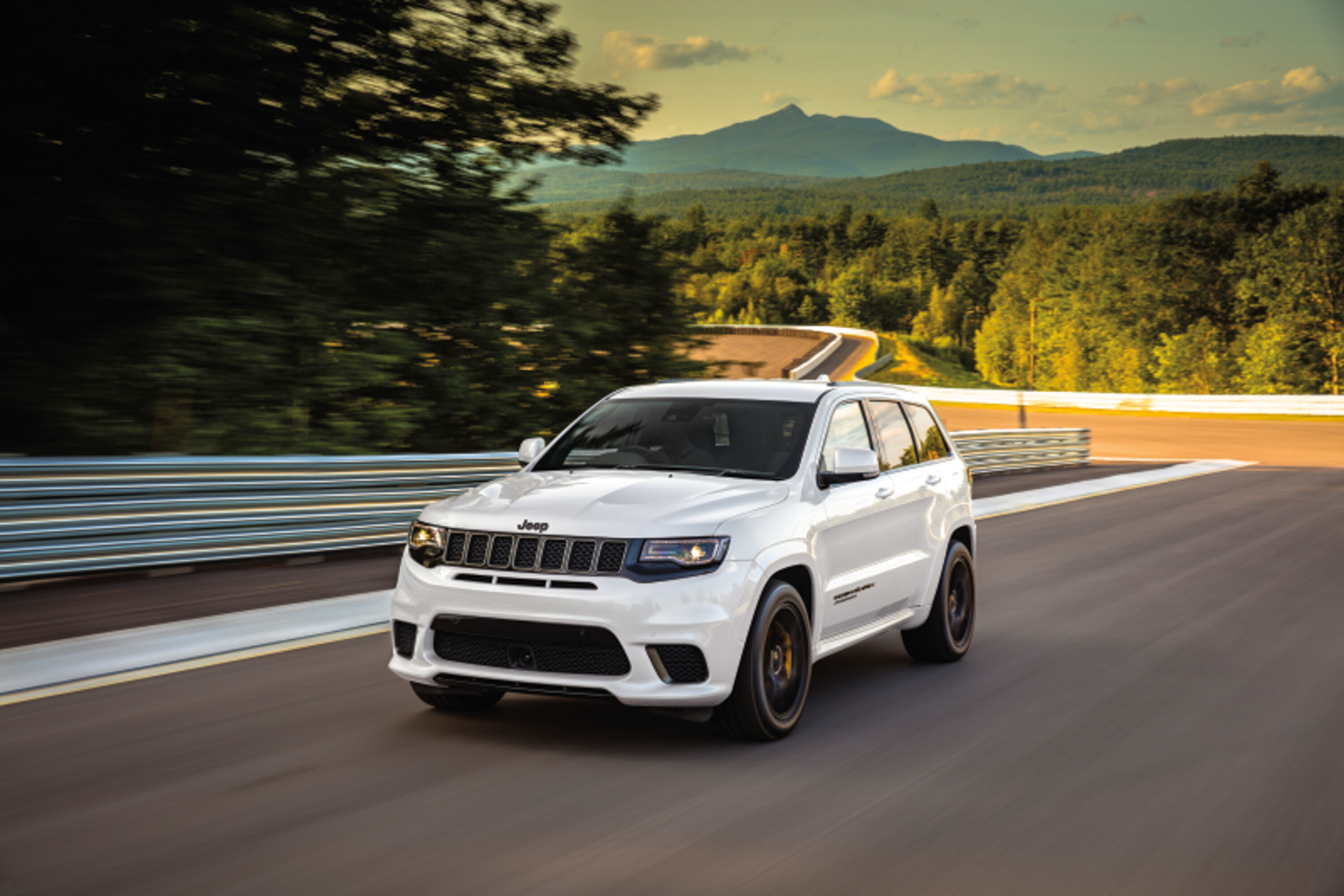
Both engines aren’t limited to 4×4 conversions, as they’re also capable of transforming any performance-oriented motorsport application.
The 6.4-litre 392 Crate HEMI V8 is listed at $16,000 +GST, while the epic 6.2-litre supercharged HEMI V8 engine “Hellcrate” is priced at $29,000 +GST. Included within the purchase is the water pump, front sump oil pan, intake manifold with throttle body, fuel injectors and coil packs.